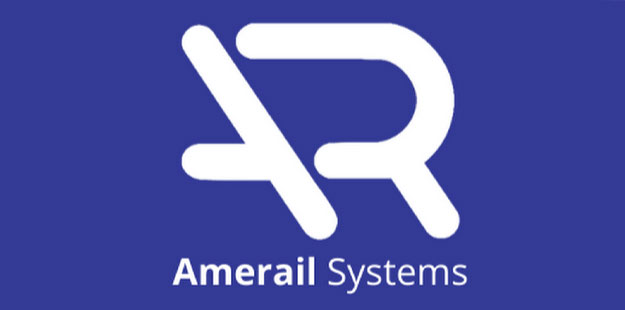From aesthetics to functionality, these trends transform your spaces to captivate guests and boost bookings.
Looking ahead to 2025, hotel design trends are shifting to align with what today’s guests truly value: comfort, convenience, culture, and a sense of individuality.
The hospitality industry is embracing new trends that put the guest experience front and center while creating spaces that are both functional and unique.
Key themes for hotel design trends 2025:
- Guest-Centric
- Unique Environments
- Flexible & Functional
- Sustainability
- Technology/Smart
- Culture
Hotels are increasingly focused on adapting to the dynamic needs of travelers, offering spaces that are multifunctional, immersive, and personalized.
From flexible layouts and wellness-driven designs to pet-friendly policies and diverse food options 2025 will see a wave of design trends that cater to both the practical needs and the aesthetic desires of today’s hotel guests.
Here’s a breakdown of our 25 design trend predictions for 2025, complete with exclusive tips from our experts to bring these concepts to life.
1. Modular and Flexible Spaces
Trend Overview:
Hotels are embracing adaptable layouts to create rooms and public spaces that can be easily customized based on the needs of different guests. This flexibility helps meet diverse demands, such as accommodating families, large groups, business travelers, or solo guests. Using modular furniture, movable walls, and reconfigurable room layouts, hotels can efficiently adjust to dynamic customer needs without major renovations. The flexibility of these spaces allows guests to experience a hotel that feels uniquely suited to their personal preferences.
Tips for Implementation:
- Invest in modular furniture and furniture with built-in charging ports.
- Use lightweight, soundproof partitions to allow seamless space transformation.
- Design suites with adjoining rooms that can be configured into larger spaces or private accommodations.
- Design lobbies and lounges with modular furniture that can be rearranged.
- Equip rooms with multi-functional furniture, like desks that convert to dining tables.
- Create communal areas that can transition between co-working and social spaces.
- For flagged hotels, work with brand-approved furniture and layout options that allow flexibility while adhering to brand standards.
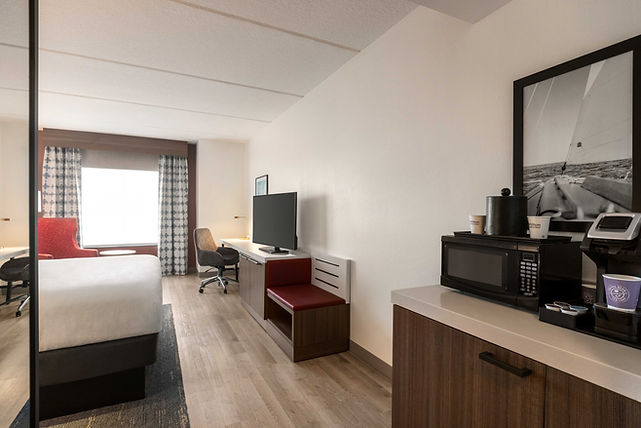
2. Enhanced Lobby Experiences
Overview:
The lobby is no longer just a check-in area but a multi-purpose hub for socializing, working, and relaxing. In 2025, lobbies will offer a blend of aesthetics and functionality, with spaces that cater to diverse activities.
Tips for Implementation:
- Add co-working areas with desks, Wi-Fi, and charging stations.
- Design zones for relaxation with comfortable seating and natural lighting.
- Design separate zones for dining and working.
- Incorporate local culture through art, music, or events.
- Use modular layouts to accommodate both large groups and solo guests.
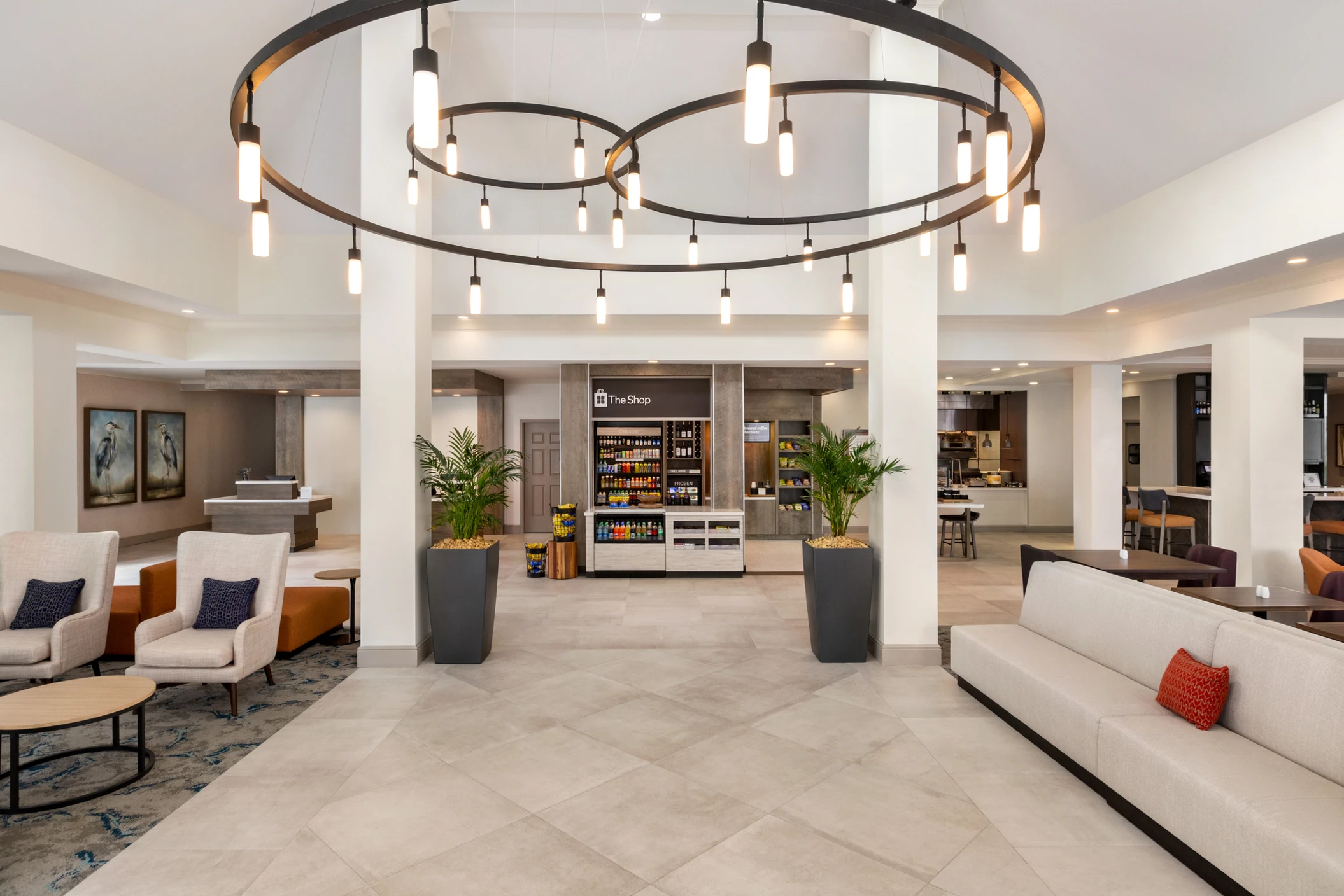
3. Wellness-Driven Design
Trend Overview: With increasing focus on mental and physical health, wellness-driven design has taken center stage in hotel renovations. Hotels are prioritizing features such as circadian lighting to improve sleep, wellness amenities like yoga mats and Peloton bikes, and outdoor spaces dedicated to relaxation. Whether it’s a spa, fitness center, or rooftop garden, hotels are offering spaces designed to restore guests’ mental and physical well-being during their stays.
Tips for Implementation:
- Install circadian lighting to improve sleep cycles.
- Design outdoor spaces for yoga or meditation.
- Equip rooms with exercise tools, like yoga mats or Peloton bikes, and air purifiers.
- Create dedicated wellness suites with additional fitness and relaxation amenities.
- Provide access to healthy dining options with nutritious menus.
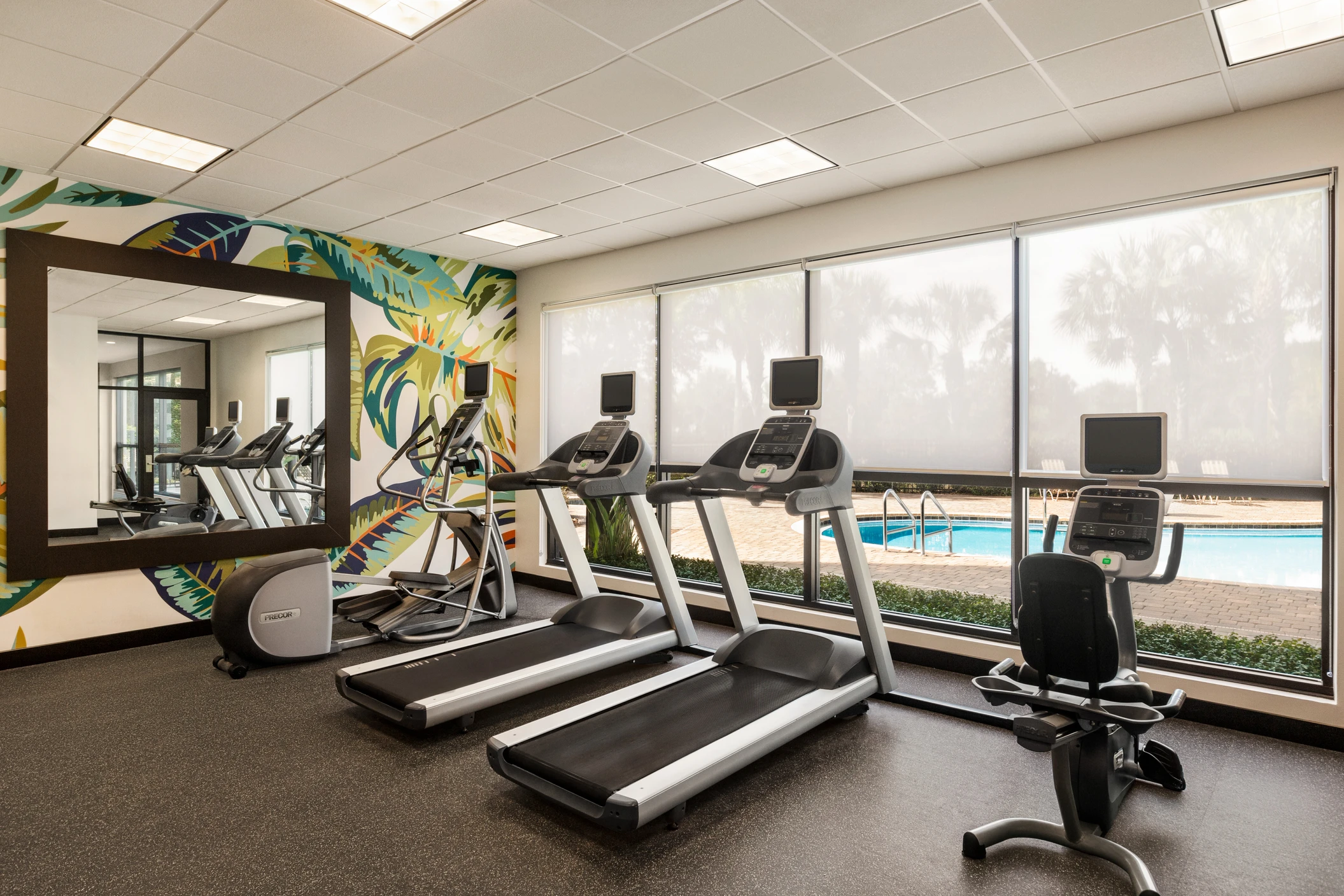
4. Dual-Brand Hotels
Trend Overview: Dual-brand hotels, which feature two hotel brands under one roof, are on the rise. This concept allows hoteliers to cater to different market segments, such as luxury and budget-conscious travelers, within a single property. It provides guests with more options for their specific needs while optimizing operational efficiency by sharing resources like kitchens, housekeeping, and maintenance staff.
Tips for Implementation:
- Maintain distinct branding in guest-facing areas to cater to diverse audiences.
- Design neutral shared spaces that cater to both guests without eliminating elements luxury travelers expect.
- Optimize shared spaces to be functional and versatile.
- Combine upscale and budget-conscious brands to capture a wide demographic.
- Clear wayfinding design to help guests navigate the hotel.
5. Extended-Stay Hotels
Trend Overview:
The demand for extended-stay accommodations is growing due to the rise of remote work, business travel, and people seeking longer vacations. These hotels are designed to provide more home-like experiences, with in-room kitchens, ample storage, and dedicated workspaces. The focus is on creating an environment that balances traveler needs with their desire for distinct spaces for long-term stay.
Tips for Implementation:
- Add kitchens and ample storage in rooms.
- Provide community areas for long-term guests to connect.
- Invest in multi-functional or modular furniture to allow guests to seamlessly go from work to dine, from dine to sleep, etc.
- Design rooms with partitions to create a sense of space, making the room seem more “homey”.
- Focus on robust Wi-Fi and work-friendly environments.
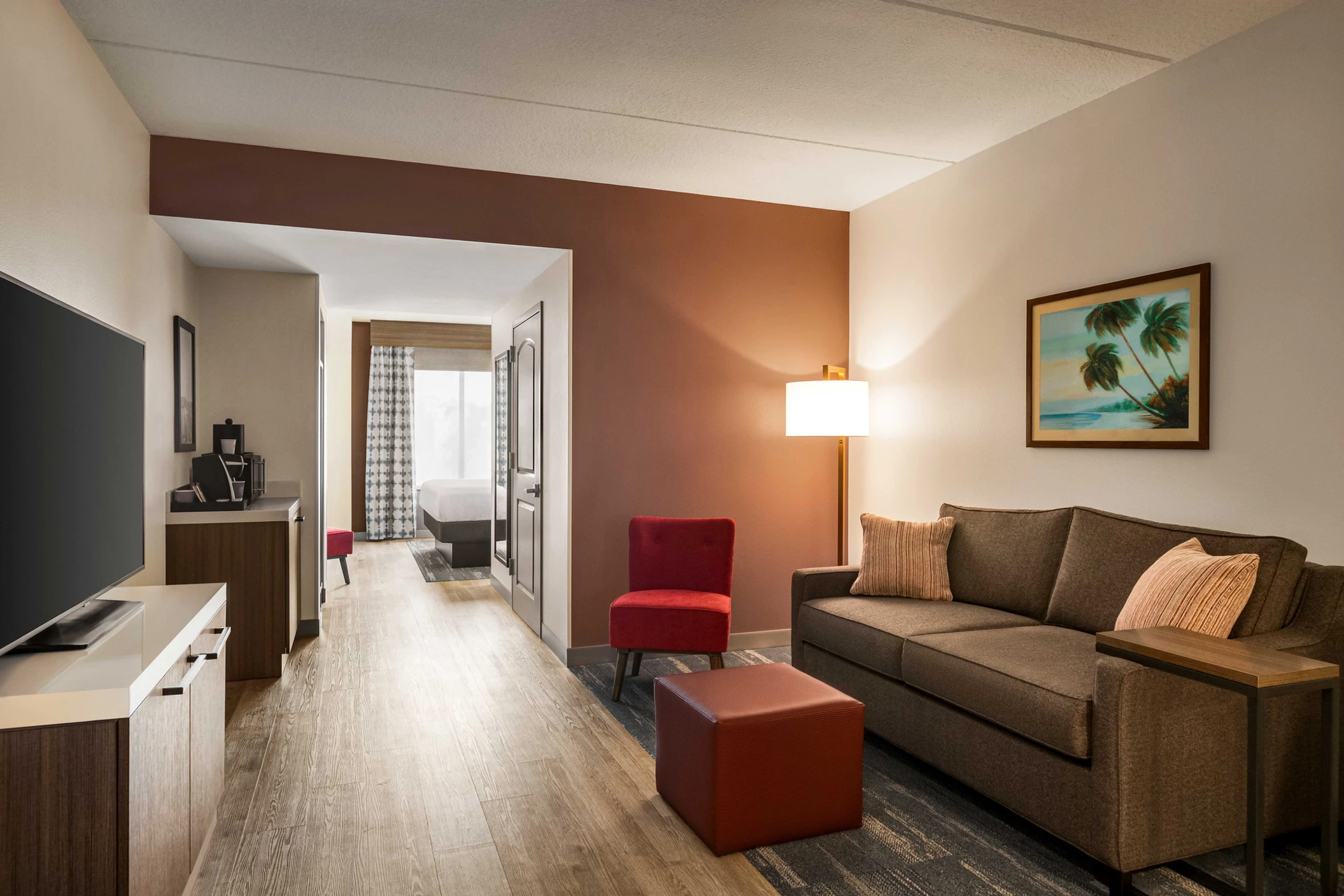
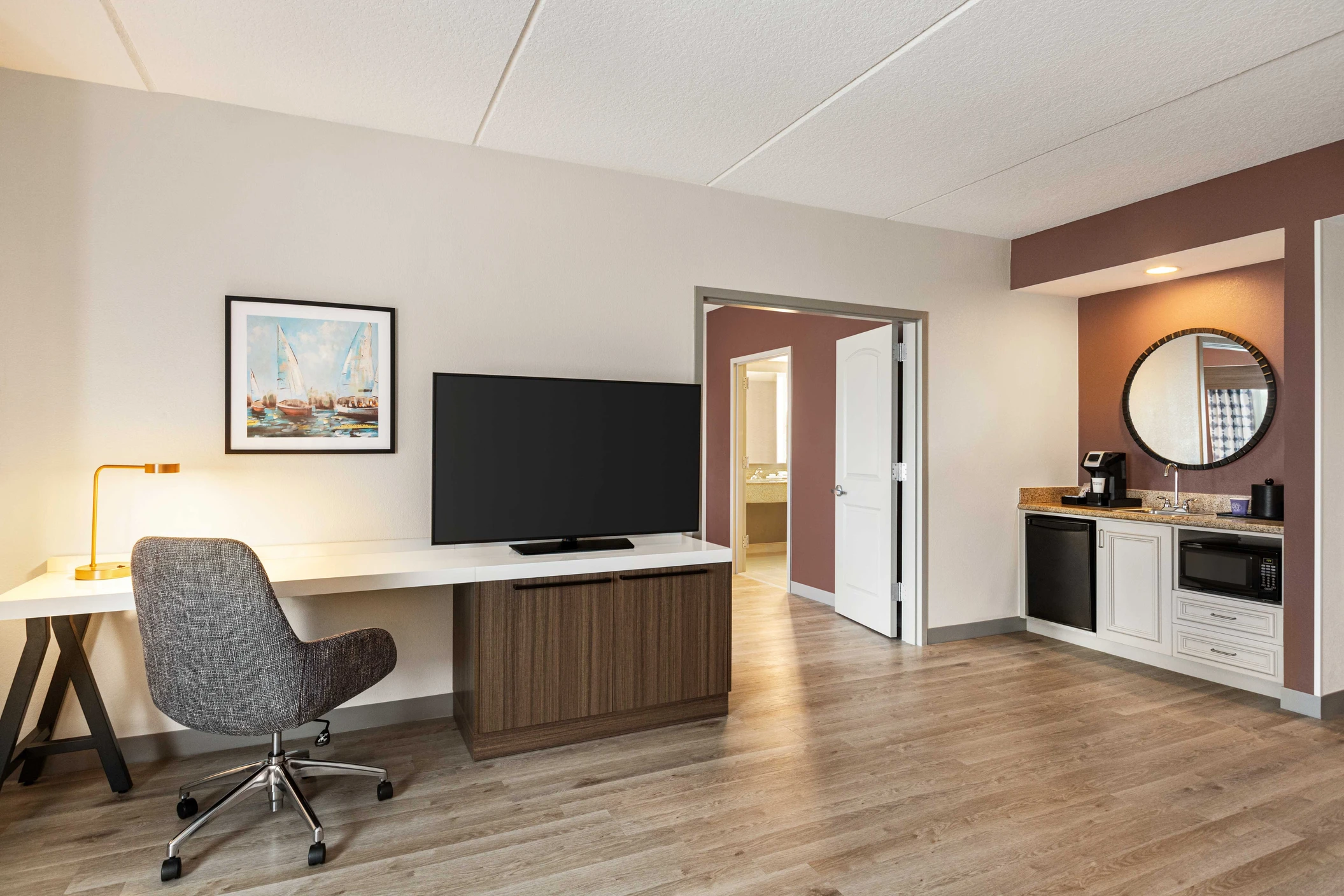
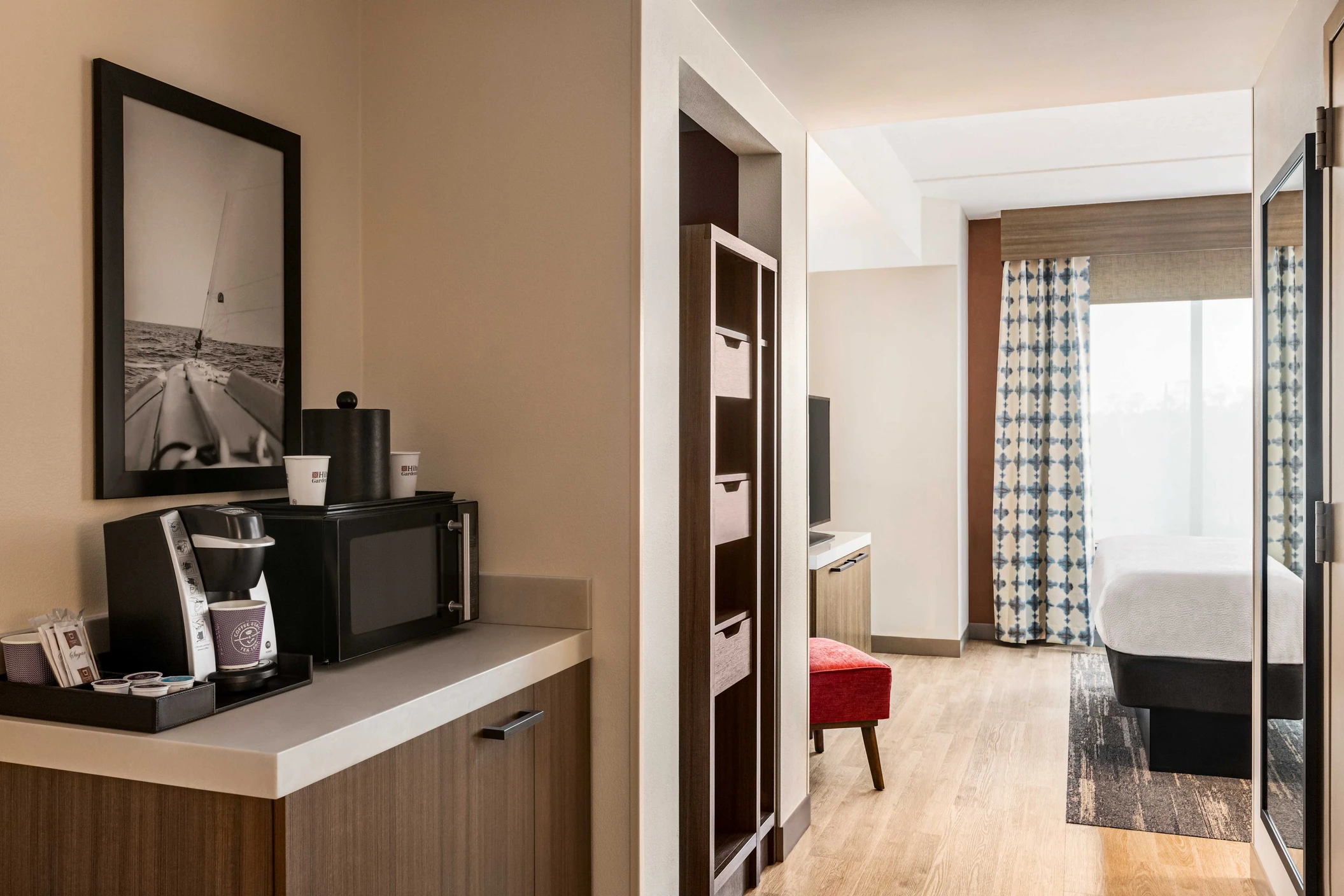
6. Hyperlocal and Artisanal Design
Trend Overview:
Guests increasingly seek authentic, immersive experiences, prompting hotels
to reflect local culture, history, and landscapes in their design. By using
regionally sourced materials, collaborating with local artists, and telling
stories that connect the space to its surroundings, hotels offer a deeper,
more meaningful experience. This approach moves beyond generic decor, making
the hotel itself a reflection of the area’s culture.
Tips for Implementation:
- Source materials from local artisans to add authenticity and support the community.
- Collaborate with local designers to ensure cultural relevance in the architecture and decor.
- Tell stories through design: Use art and architecture to showcase local history.
- Design spaces to reflect local culture, using symbols, colors, and materials unique to the region.
- Offer educational content through tours or in-room resources that teach guests about the area’s history.
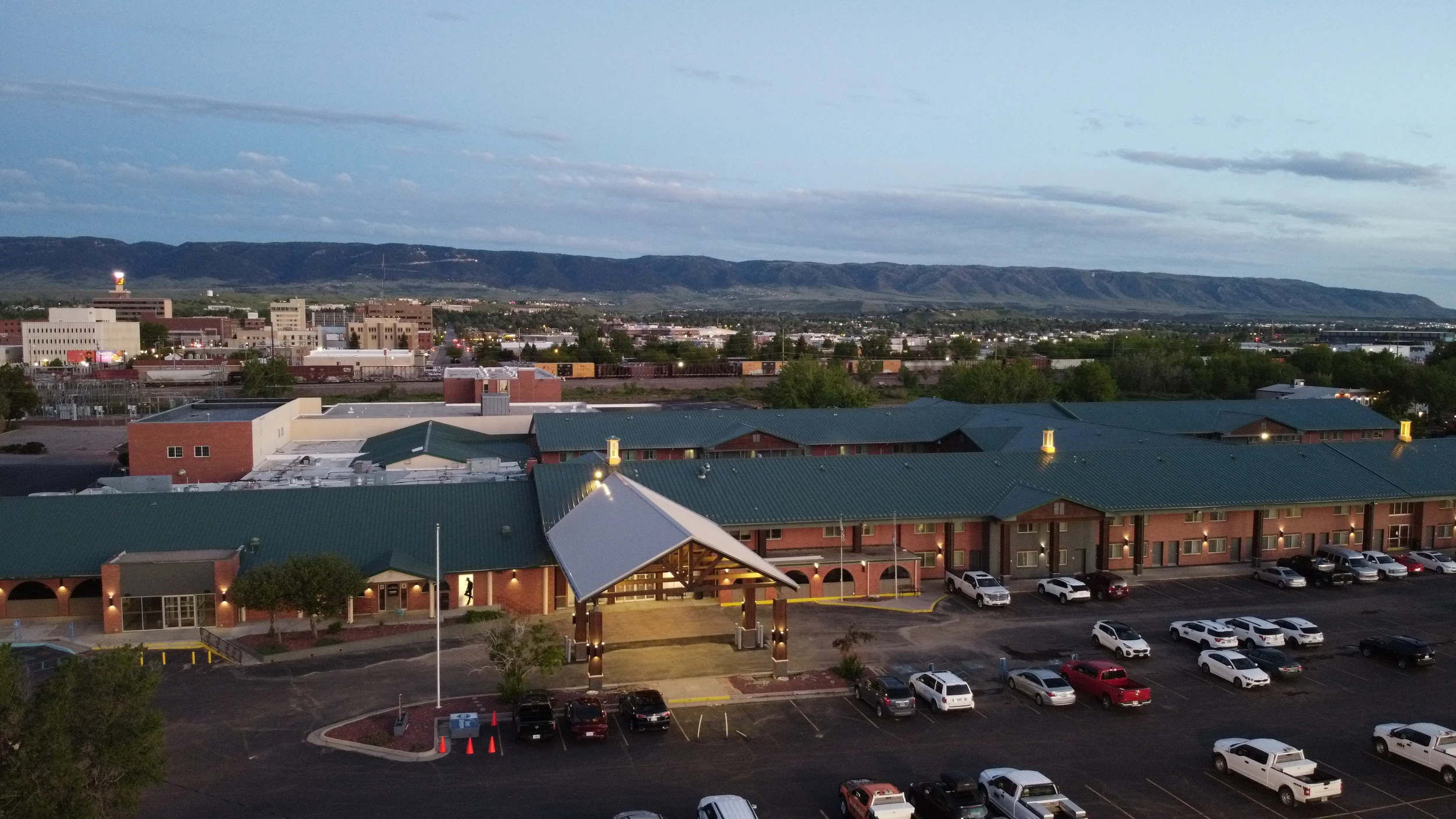
7. Smart Rooms and Technology Integration
Trend Overview:
The integration of smart technology into hotel rooms is revolutionizing the
guest experience. From voice-activated controls for lighting, temperature,
and entertainment to app-based room customization, technology is making it
easier for guests to personalize their stay. Additionally, IoT sensors help
optimize energy consumption, providing an eco-friendly element to the smart
hotel experience.
Tips for Implementation:
- Introduce voice-activated controls for lighting and temperature.
- Develop app-based controls for room customization.
- Use sensors for energy efficiency, like automated lights and AC.

8. Eco-Positive Designs
Trend Overview:
Sustainability remains a core priority for the hospitality industry. Hotels
are incorporating eco-positive practices into their designs, using reclaimed
materials, renewable energy sources, and water-efficient landscaping. Whether
it’s installing solar panels or designing for LEED certification, the emphasis
is on minimizing environmental impact while still providing luxury experiences
for guests.
Tips for Implementation:
- Invest in solar panels and rainwater collection systems.
- Invest in energy-efficient windows.
- Use reclaimed or carbon-neutral materials.
- Work toward green certifications like LEED.
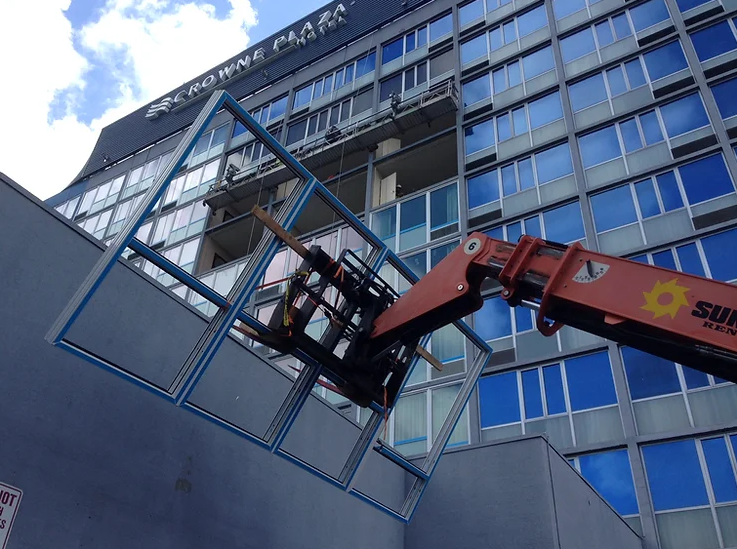
9. Outdoor Expansion
Trend Overview:
Expanding hotel offerings into outdoor spaces is becoming increasingly
popular. Guests want access to nature during their stay, and hotels are
responding by adding rooftop gardens, outdoor dining areas, walking trails,
and event spaces. These additions not only enhance guest experiences but also
create opportunities for sustainability by incorporating native plants and
sustainable practices in outdoor landscaping.
Tips for Implementation:
- Create walking trails or open-air event spaces.
- Focus on landscaping with native plants to reduce water use.
- Create outdoor dining areas with comfortable seating and ambiance.
- Design gardens and green spaces for relaxation and events.
- Install outdoor fitness and recreational facilities.
- For flagged hotels, work within brand standards to enhance outdoor spaces with approved design elements and amenities.
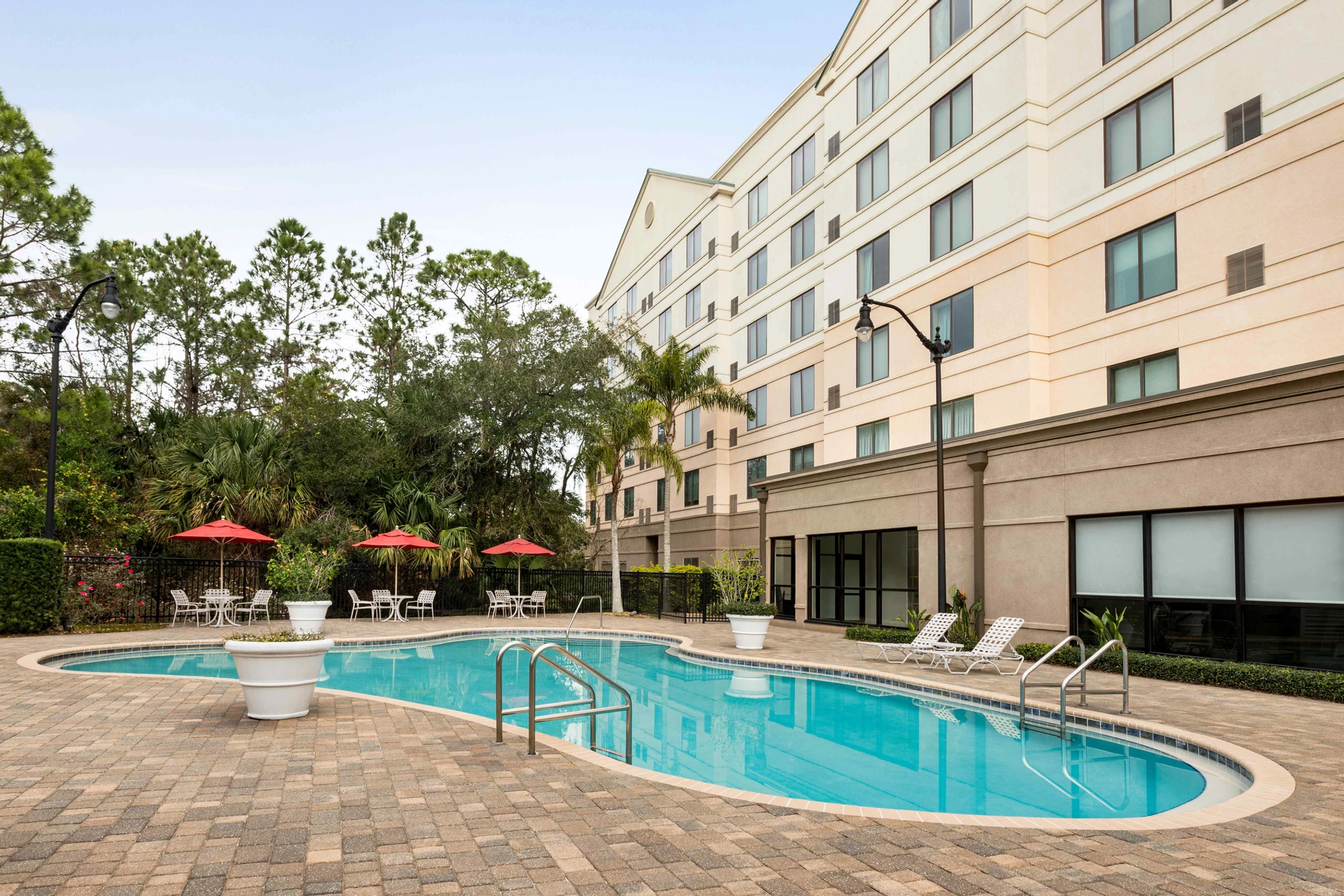
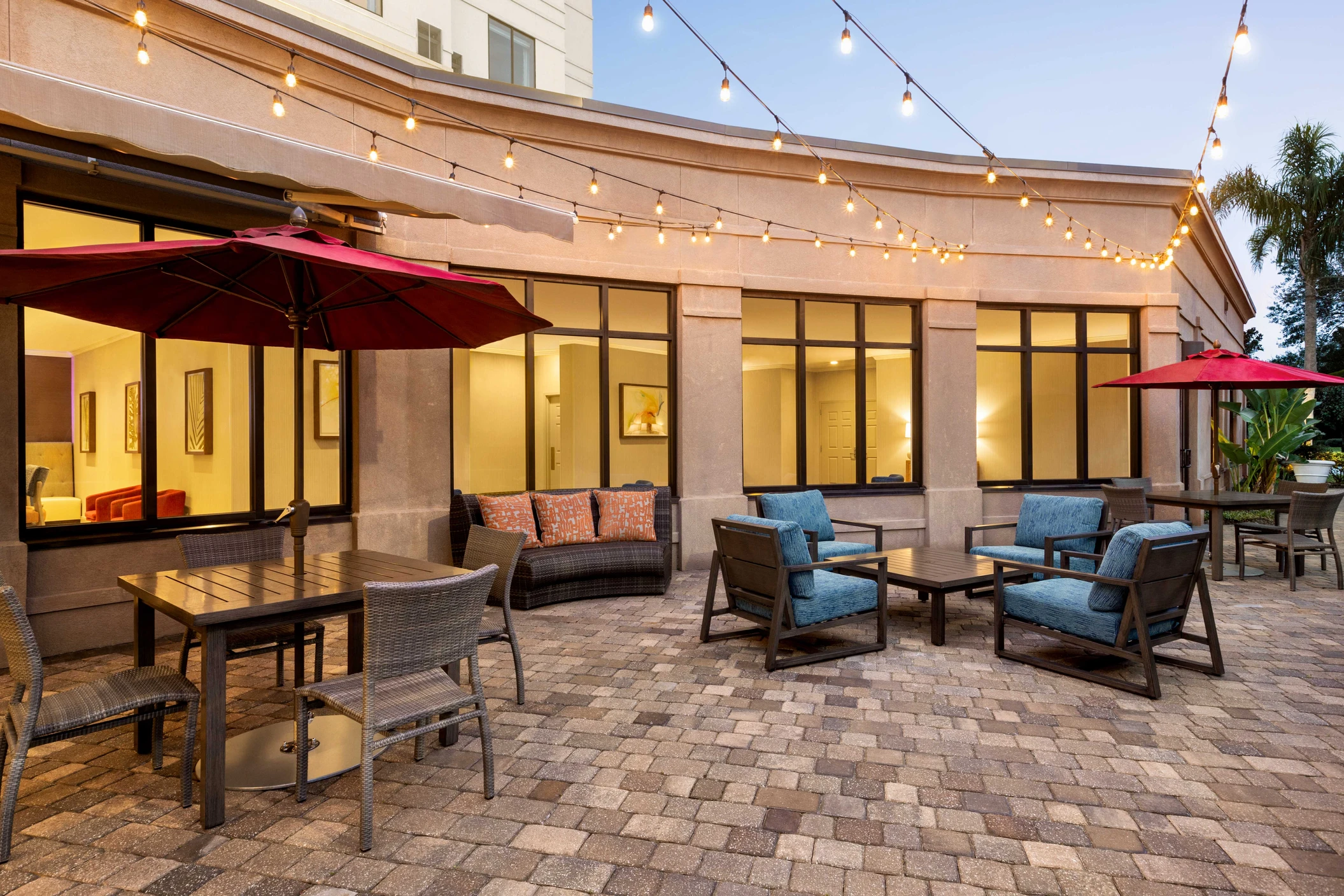
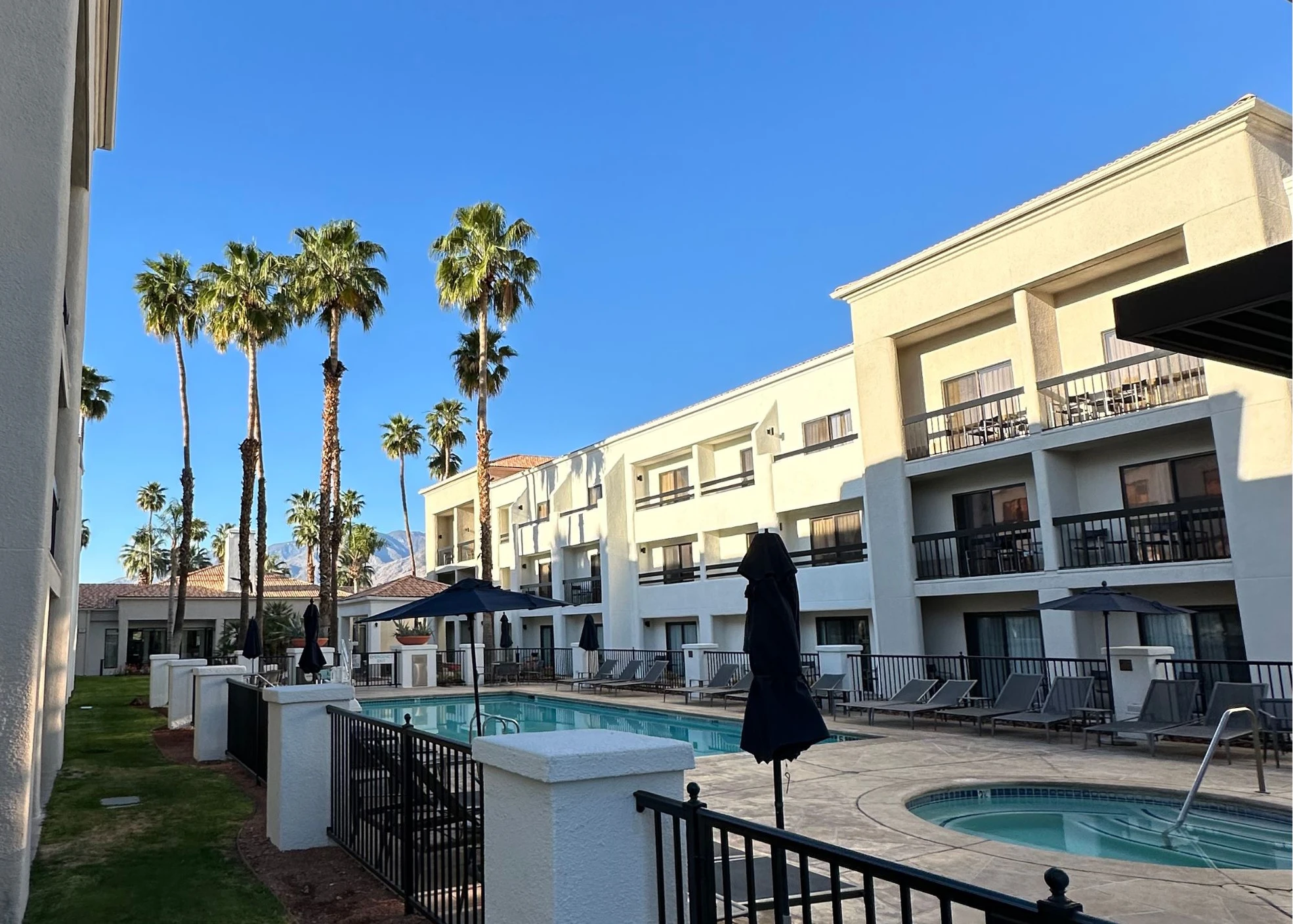
10. Boutique Aesthetic at Scale
Trend Overview:
Chain hotels are increasingly embracing the boutique-style aesthetic to offer more personalized and unique guest experiences. By incorporating local culture and distinctive design elements, large-scale properties are adopting a level of individuality and intimacy typically associated with smaller, independent hotels.
This shift reflects the growing traveler preference for the intimate, luxurious feel that boutique hotels provide. In 2025, major hotel brands are prioritizing personalization and standout design to create memorable, tailored experiences that set them apart in an evolving hospitality landscape.
Tips for Implementation:
- Use decor inspired by the surrounding community.
- Introduce unique art pieces and locally inspired room themes.
- Personalize guest welcome notes and amenities.
- Incorporate unique art and décor pieces in guestrooms and public spaces.
- Offer curated local experiences as part of the stay.
- Use high-end, comfortable materials in room design, like Egyptian cotton and custom furniture.
- Create signature amenities or experiences that distinguish the property.
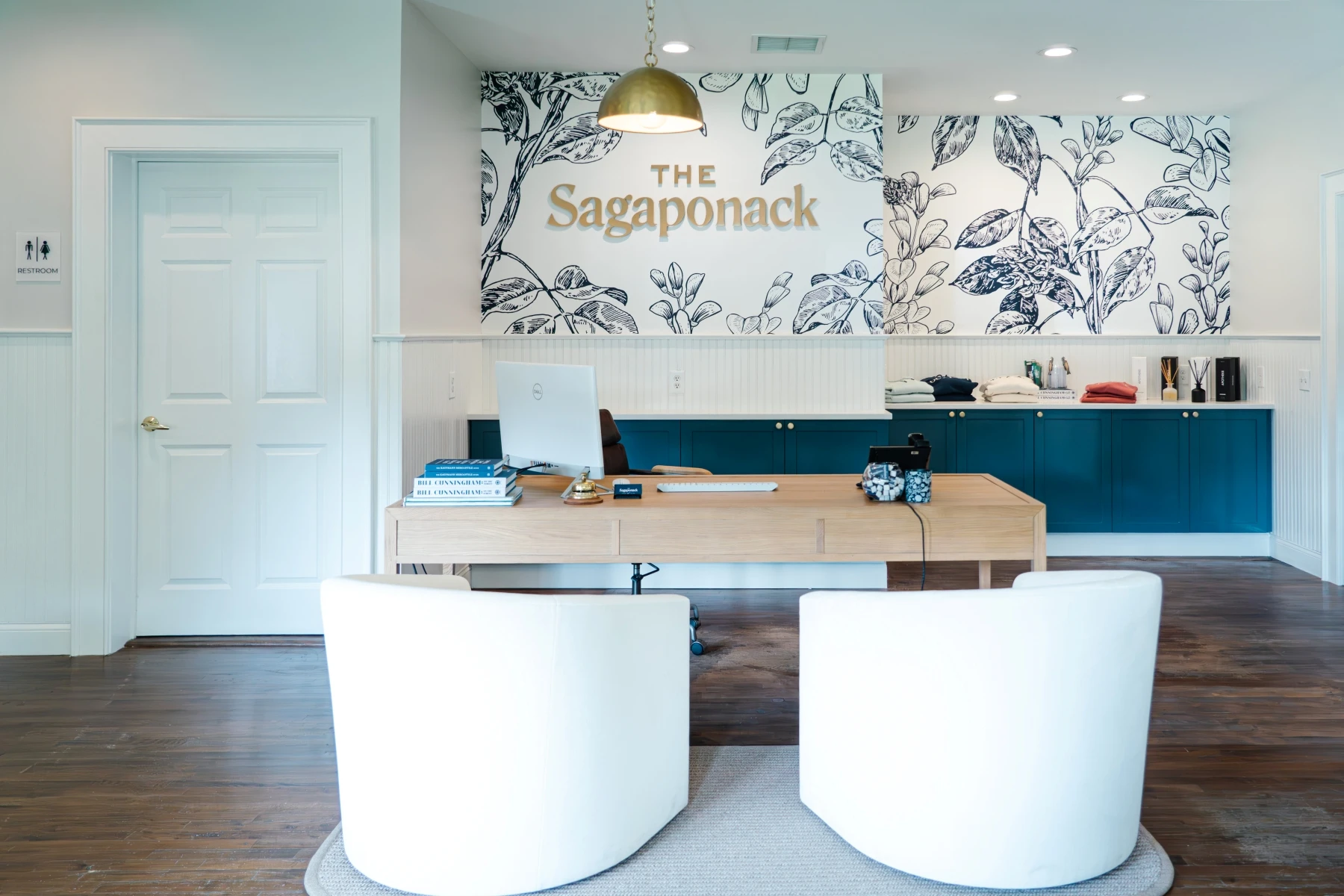
Boutique Aesthetic at Scale
11. Personalized Guestroom Experiences
Overview:
Personalization continues to grow in importance, and in 2025, guestrooms will offer tailored features that cater to individual guest preferences, from room settings to curated amenities.
Tips for Implementation:
- Use AI to suggest personalized room preferences based on previous stays.
- Offer customizable minibars and in-room dining options.
- Allow guests to select room scents, lighting settings, or pillows during booking.
- Provide app-based control for all room features.
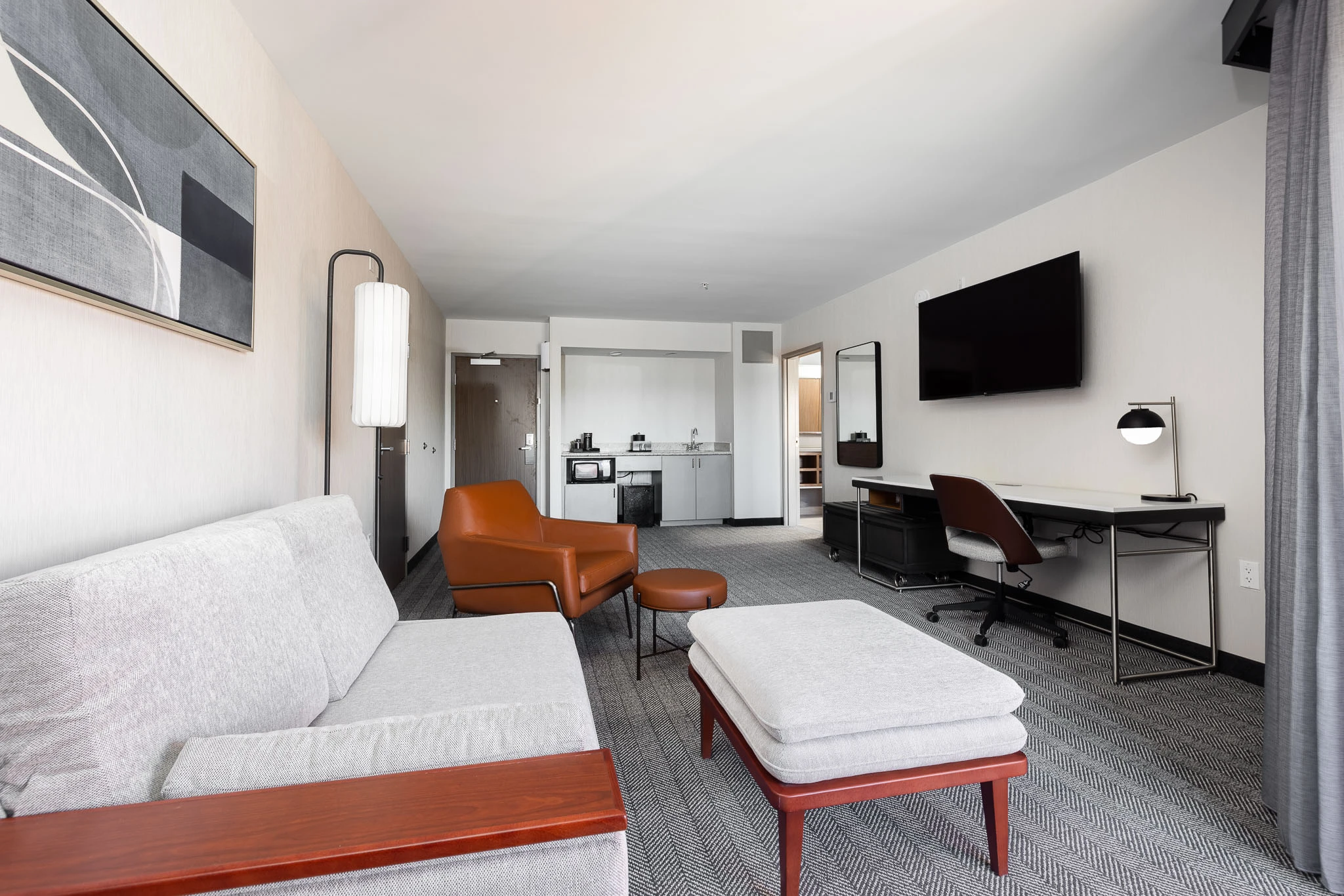
12. Circular Economy Practices
Trend Overview:
The circular economy concept focuses on reducing waste by reusing and recycling materials, making it a natural fit for the hospitality industry. Hotels are exploring ways to extend the life cycle of materials and products, from upcycled furniture to composting food waste, all with a view to minimizing their environmental footprint.
Tips for Implementation:
- Use upcycled furniture and decor.
- Partner with local businesses to manage waste sustainably.
- Set up composting systems for food waste.
- Create a craft station where guests and employees can discard items like fabric, ribbons, paper, etc. that can be organized and used by guests for crafting during their stay.
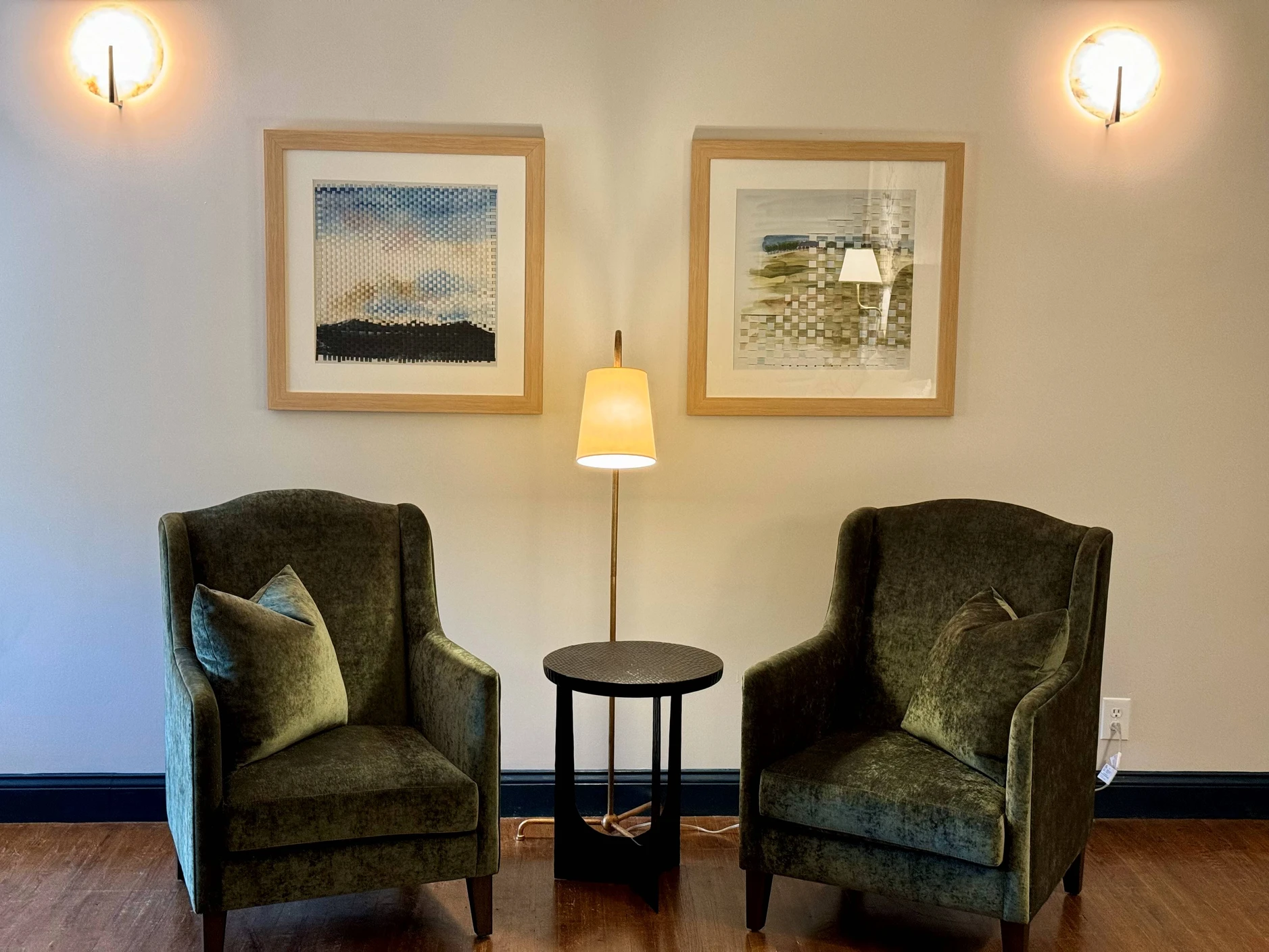
13. Food Sustainability
Trend Overview:
Sustainability is also making waves in hotel dining. Hotels are focusing on sourcing food locally, reducing waste, and embracing farm-to-table dining. The food and beverage industry’s growing awareness of environmental issues has led to a stronger focus on zero-waste kitchens, sustainable sourcing, and even in-house gardening efforts.
Tips for Implementation:
- Source ingredients from hyperlocal suppliers.
- Introduce on-site gardens or vertical farms.
- Reduce single-use plastics in restaurants and bars.
- Add a local section to your lobbies market.
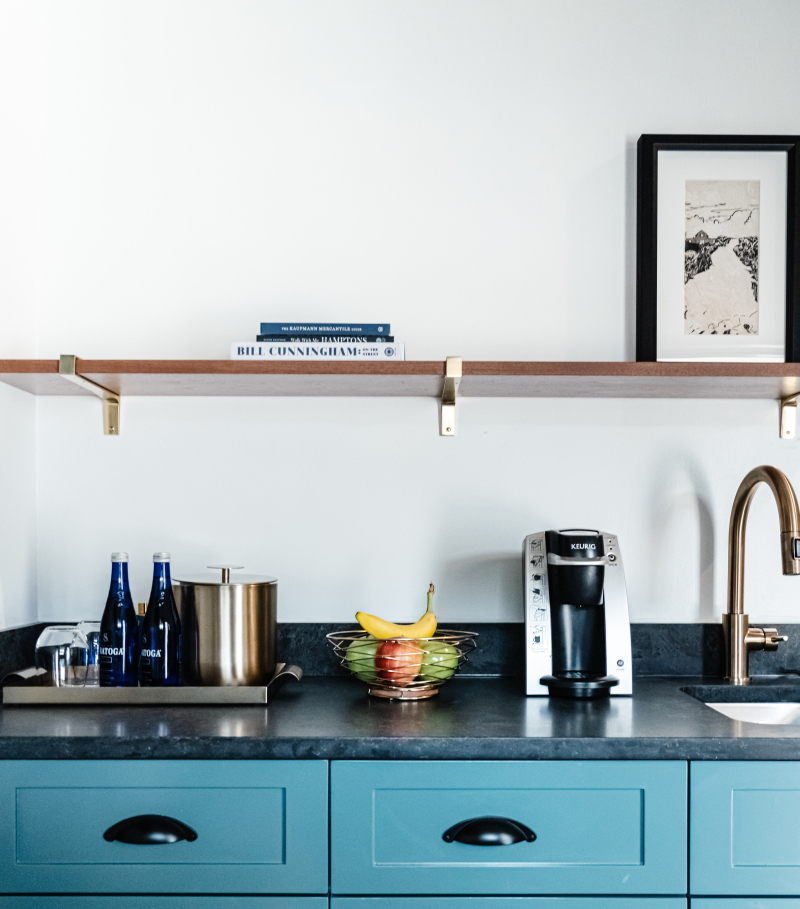
14. Mid-Century Modern Interiors
Trend Overview:
Combining nostalgic design elements with futuristic technology, retro-futuristic interiors are creating unique and vibrant hotel aesthetics. This design style incorporates elements from the mid-20th century, like bold color palettes and patterns and vintage furniture, while blending them with sleek, modern materials and advanced technology.
Tips for Implementation:
- Combine vintage furniture with sleek, modern materials.
- Use bold color palettes and patterns in wallpaper, flooring, etc.
- Incorporate futuristic lighting or tech-inspired decor.
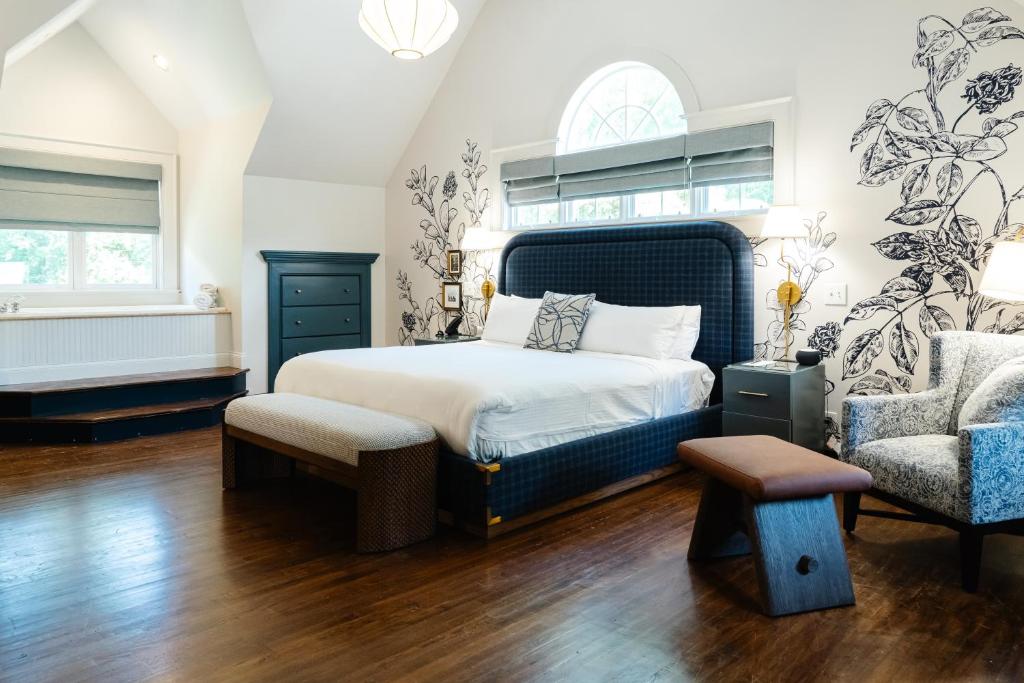
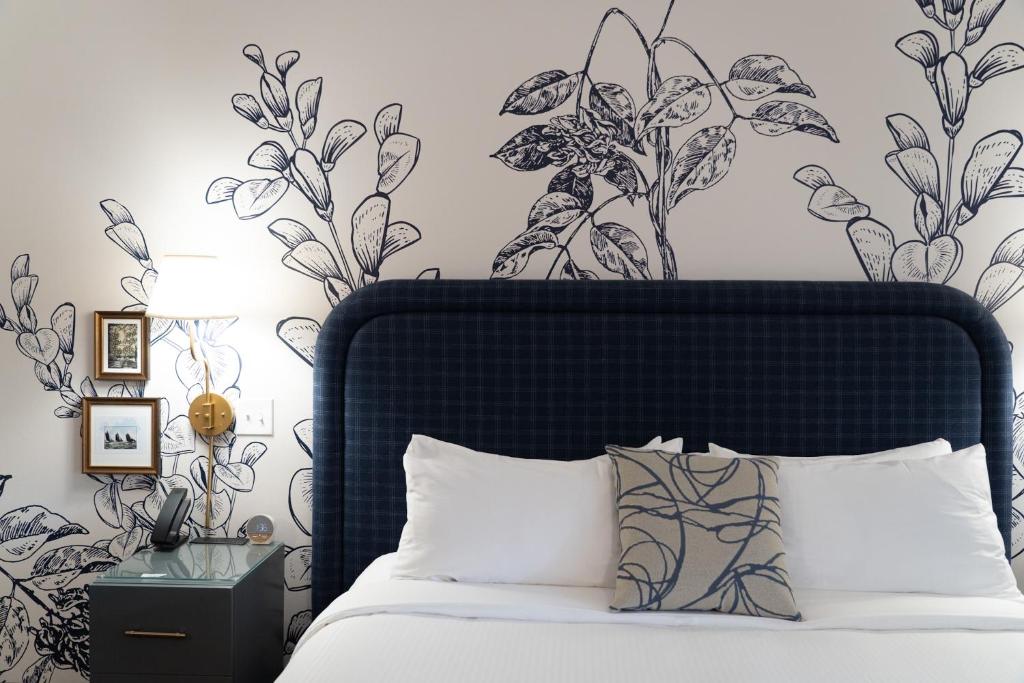
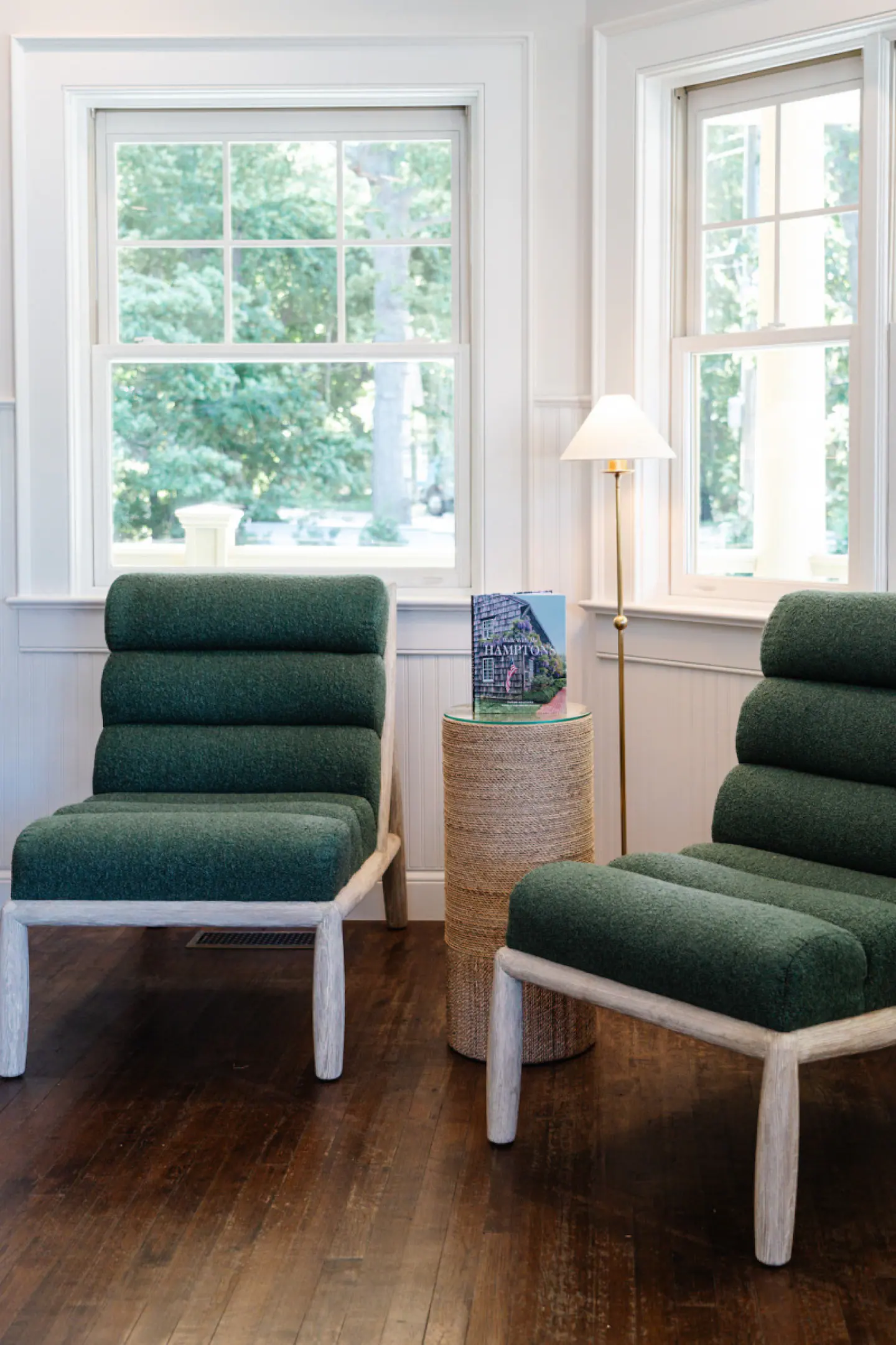
15. Immersive Art Installations
Overview:
Art is increasingly becoming a central feature of hotel design, particularly in public spaces. In 2025, expect more hotels to integrate immersive and interactive art installations that engage guests and create lasting impressions.
Tips for Implementation:
- Partner with local artists to create unique, immersive art installations or a gallery.
- Hire local window painters to create window art for different seasons or holidays.
- Consider interactive art that allows guests to engage with the piece (i.e., augmented reality art).
- Use large-scale, visually impactful pieces in lobbies, corridors, and event spaces.
- Regularly rotate art to keep the experience fresh for returning guests.
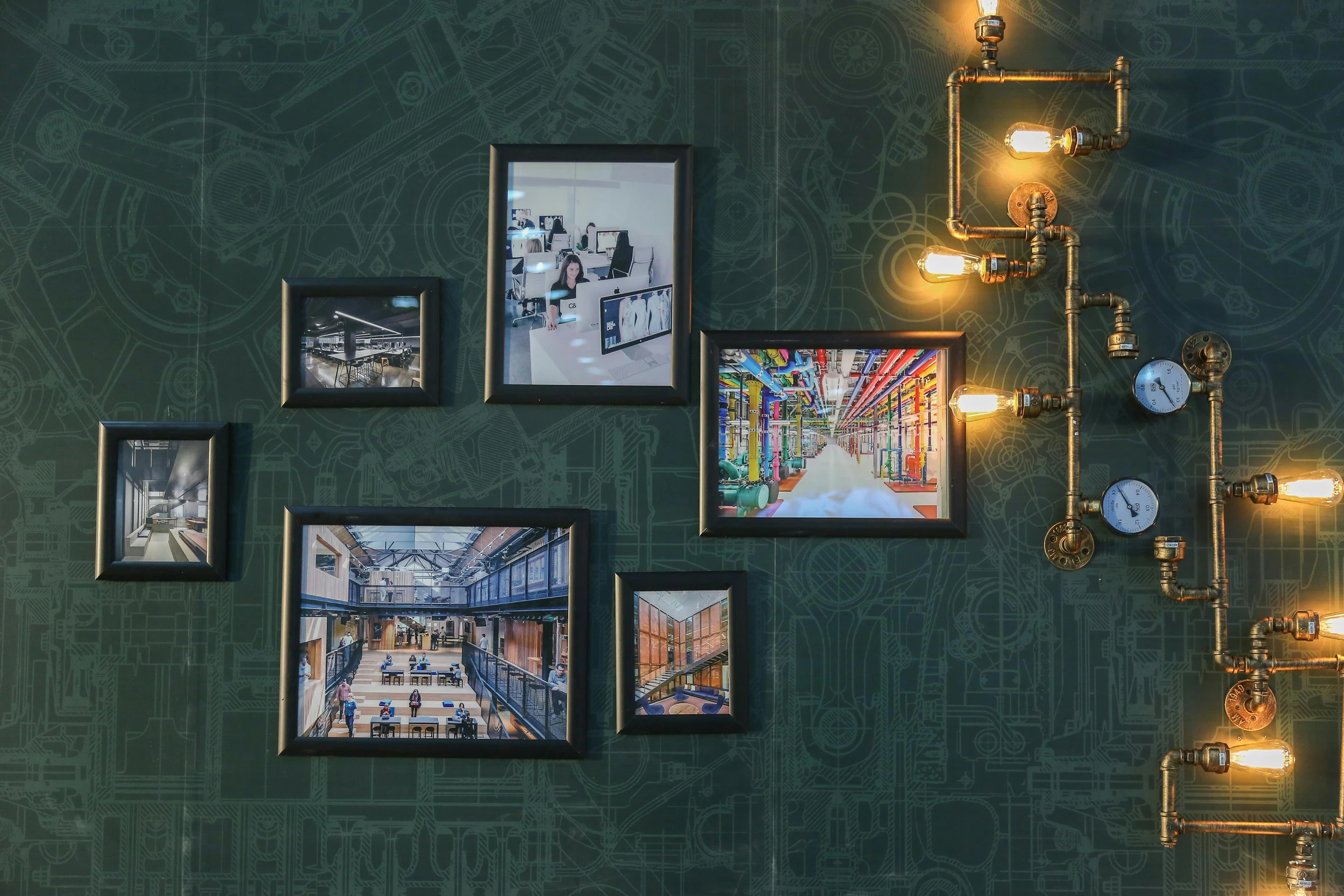
16. Pet-Friendly Features
Trend Overview:
More travelers are bringing their pets with them, prompting hotels to develop pet-friendly amenities. These features range from designated pet rooms and areas to dog parks and pet menus. By catering to this growing market, hotels are enhancing the guest experience for animal lovers and attracting them too.
Tips for Implementation:
- Designate pet-friendly floors or rooms.
- Provide treats at the front desk or in lobbies.
- Provide pet amenities like water bowls, beds, and menus.
- Create fenced dog parks or walking trails.
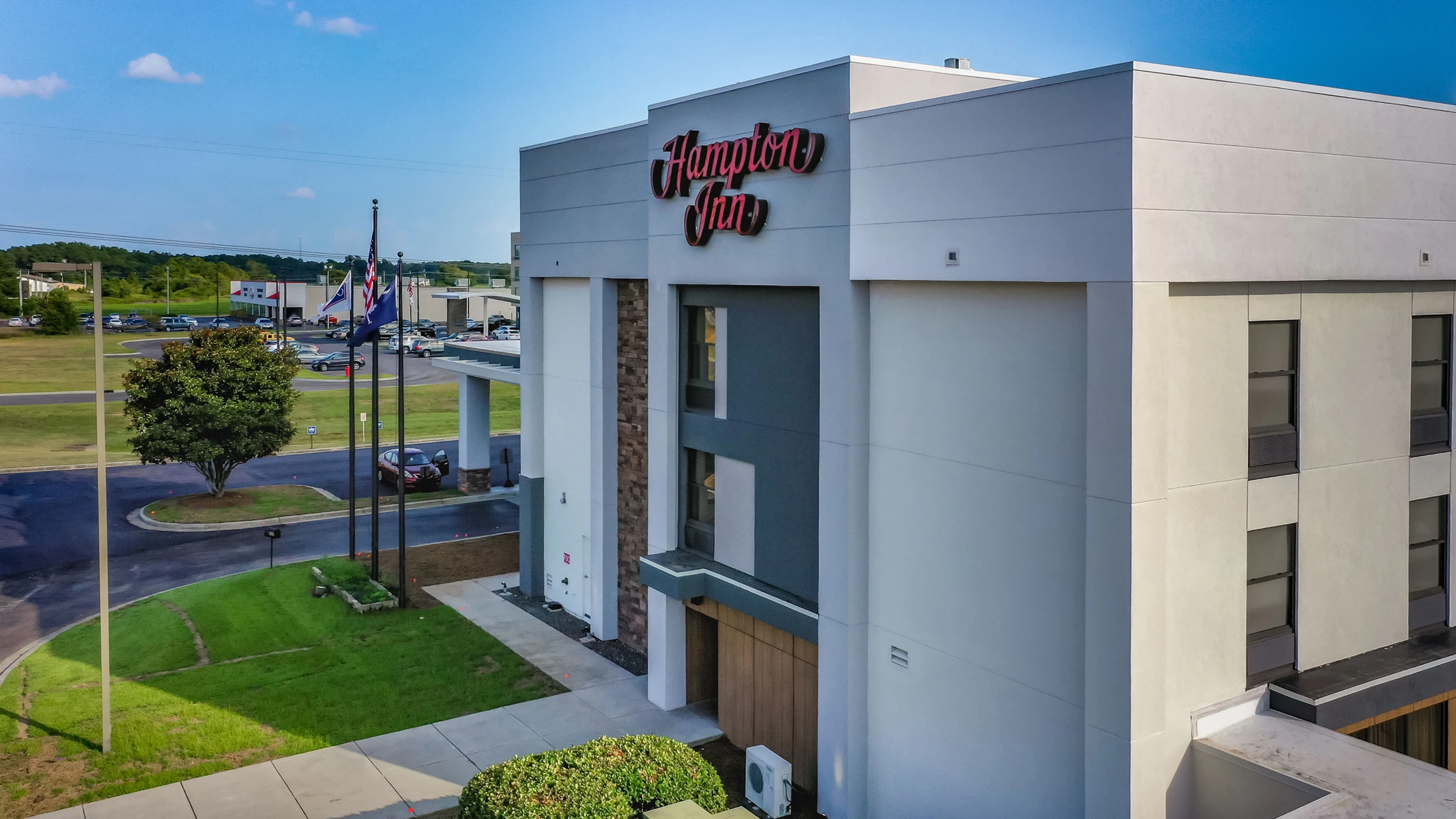
17. Nature-Inspired Interiors
Overview:
Biophilic design isn’t new, but 2025 will see even more emphasis on incorporating natural elements into hotel interiors. This trend fosters a sense of tranquility and connection to the environment.
Tips for Implementation:
- Use natural materials like wood, stone, and linen in room and public area designs.
- Include living walls, potted plants, or vertical gardens.
- Maximize natural light with large windows or skylights.
- Incorporate nature-inspired art or patterns in textiles and wallpaper.
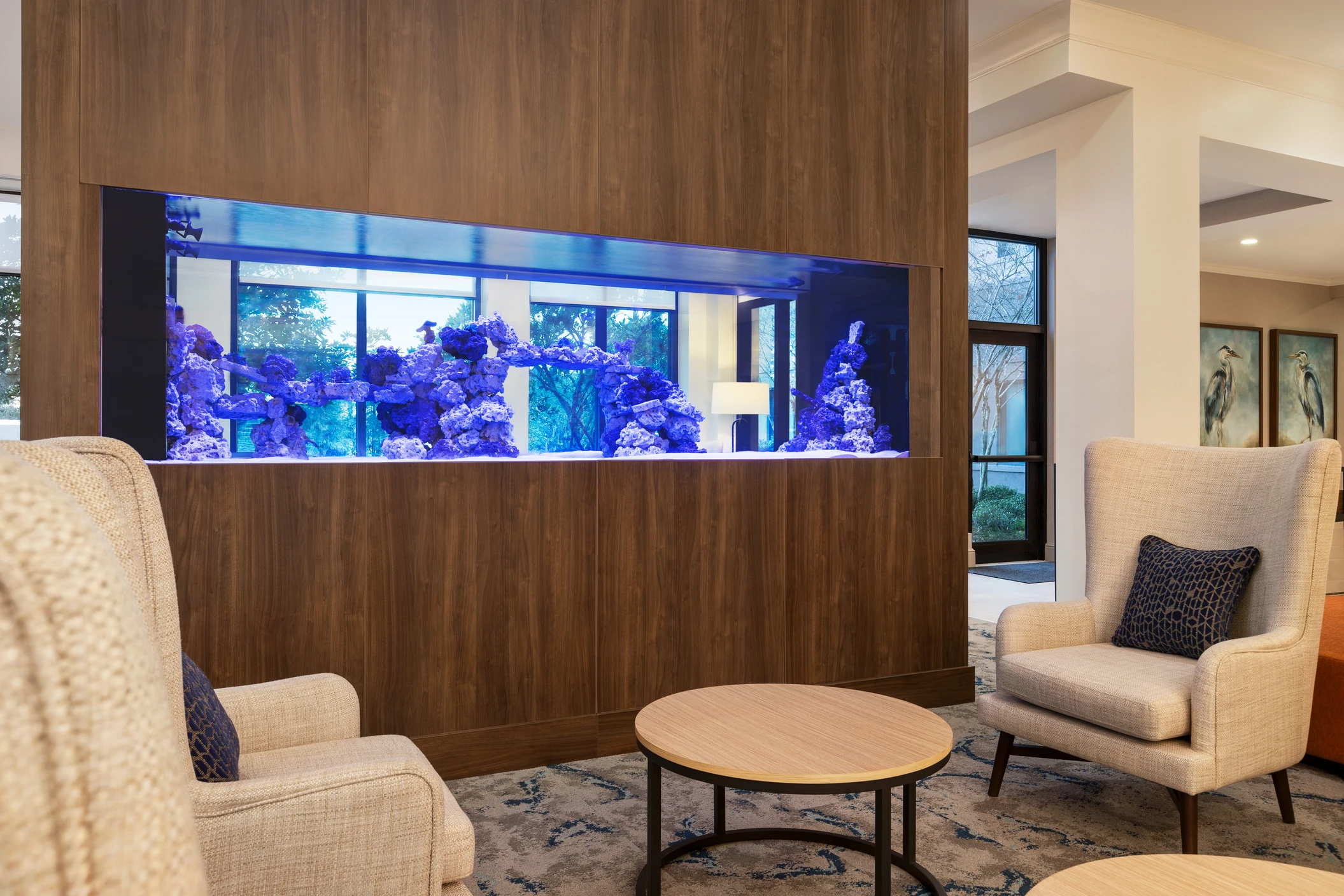
18. Pop-up Experiences and Events
Trend Overview:
Pop-up may become an essential tool for hotels looking to provide unique and limited-time experiences to their guests.
Whether it’s a curated art exhibit, a themed dining experience, or a temporary wellness retreat, these events drive guest engagement and provide a sense of exclusivity. They also allow hotels to generate buzz and attract both new and returning guests with experiences that align with current trends and seasonal themes.
Tips for Implementation:
- Host seasonal pop-up events like art shows or themed dinners.
- Collaborate with local businesses for pop-up shops or events.
- Create exclusive experiences that are time-sensitive, like a limited-time rooftop yoga class.

19. Sustainable and Reusable Materials
Trend Overview:
Sustainability extends beyond eco-friendly operational practices to hotel interiors and designs. Hotels are incorporating sustainable, reusable materials into their building projects, such as reclaimed wood, upcycled furnishings, and natural finishes. This trend emphasizes not only reducing the carbon footprint but also creating aesthetic appeal through sustainable choices.
Tips for Implementation:
- Use reclaimed wood or recycled materials in furniture and decor.
- Integrate natural materials like bamboo and cork for a warm, earthy look.
- Focus on low-maintenance and durable materials to reduce long-term waste.


20. Unique and Immersive Experiences
Trend Overview:
The rise of experiential travel is pushing hotels to go beyond providing a comfortable stay to offering fully immersive experiences. From virtual reality rooms that transport guests to another world to interactive storytelling experiences, hotels are increasingly incorporating engaging activities into the guest journey to create lasting memories.
Tips for Implementation:
- Introduce VR or AR experiences to allow guests to explore different environments.
- Create immersive in-room experiences with themed decor or interactive displays.
- Partner with local guides to offer personalized, curated tours for guests.

21. Artisanal Food & Beverage
Overview:
Guests are seeking more authentic and artisanal dining experiences. In 2025, this trend will continue with a focus on locally sourced ingredients, craft beverages, and signature dishes that reflect the hotel’s location.
Tips for Implementation:
- Partner with local farms and suppliers for fresh ingredients.
- Create signature menu items that tell a story about the area.
- Offer mixology classes or tastings with local beverages.
- Design dining spaces with open kitchens or chef-led experiences.

22. Co-living Spaces
Trend Overview:
A growing trend in the hotel industry, especially in urban settings, are co-living spaces that offer affordable yet high-quality accommodations for guests who wish to live and work in the same environment. These spaces often include private rooms with shared common areas like kitchens, lounges, and coworking spaces, catering to digital nomads and long-term guests.
Tips for Implementation:
- Design rooms with shared kitchens and lounges to foster community.
- Include workspaces and high-speed internet for digital nomads.
- Provide flexible leasing options for longer stays.
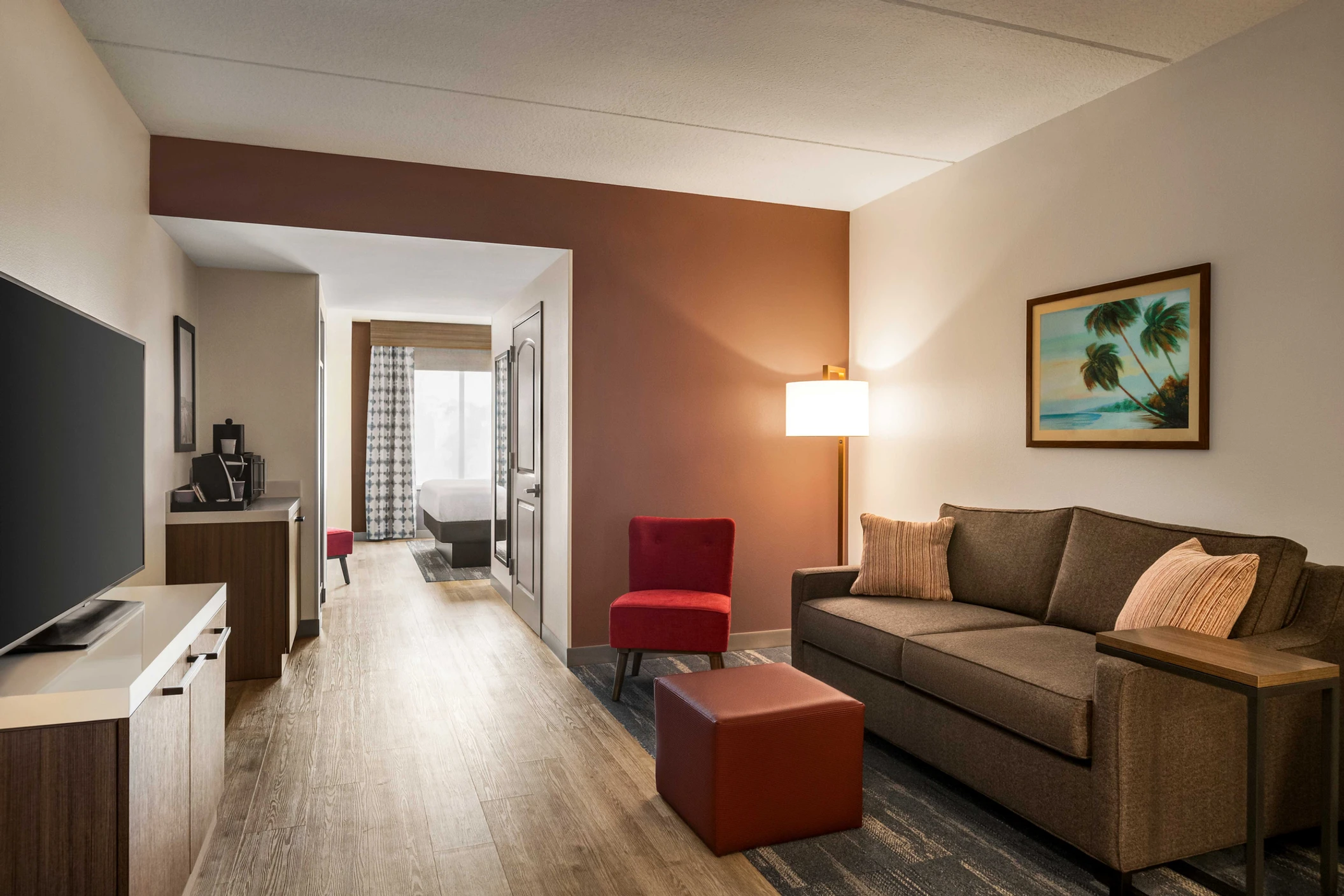
23. Focus on Family Travel
Overview:
Family-friendly design is evolving in 2025 to include more than just extra beds or cribs. Hotels are focusing on creating engaging spaces and activities for all ages, including kid-friendly rooms and on-site entertainment.
Tips for Implementation:
- Design suites with separate areas for kids and adults.
- Include interactive play areas in lobbies or outdoor spaces.
- Offer customizable family packages with room configurations and activities.
- Equip rooms with kid-friendly tech and furniture.
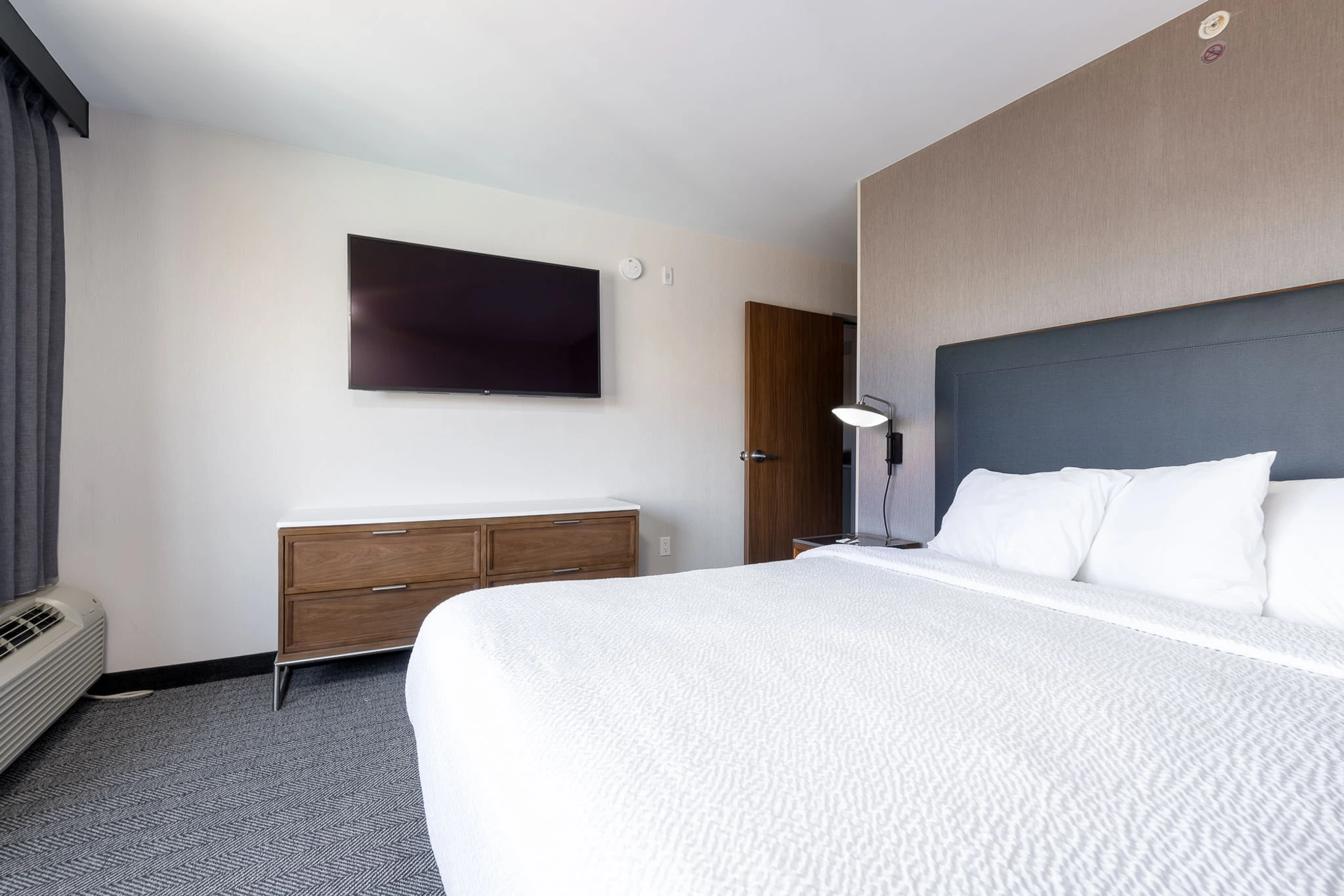
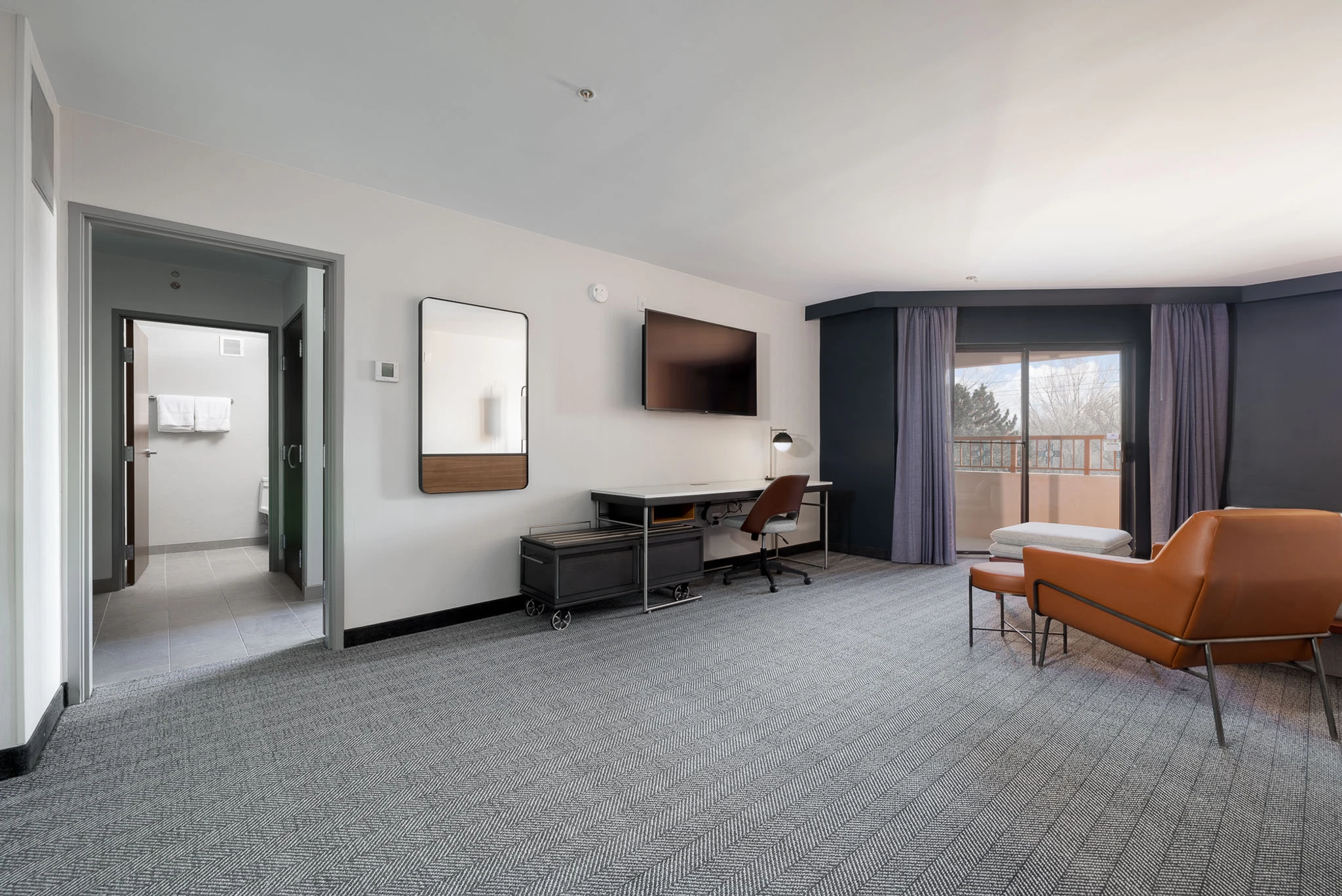
24. Hybrid Event Spaces
Overview:
Hybrid events, blending in-person and virtual attendance, are here to stay. Hotels are designing event spaces equipped with technology to support these formats, catering to business and social gatherings alike.
Tips for Implementation:
- Install advanced AV systems, including cameras and microphones, for virtual attendees.
- Offer high-speed, reliable internet for streaming events.
- Design spaces that can flex between intimate gatherings and large conferences.
- Provide tech support and event planning services.
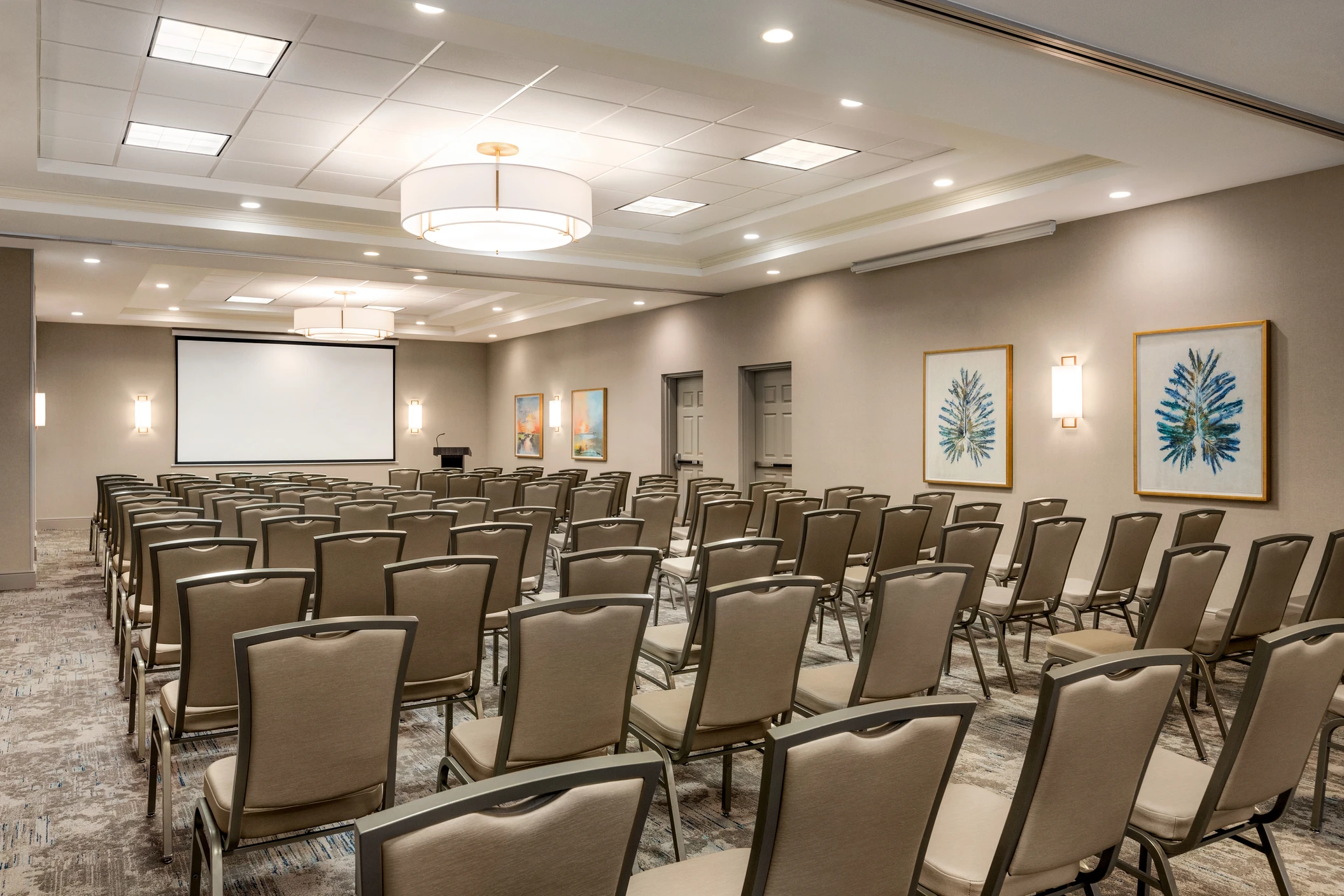
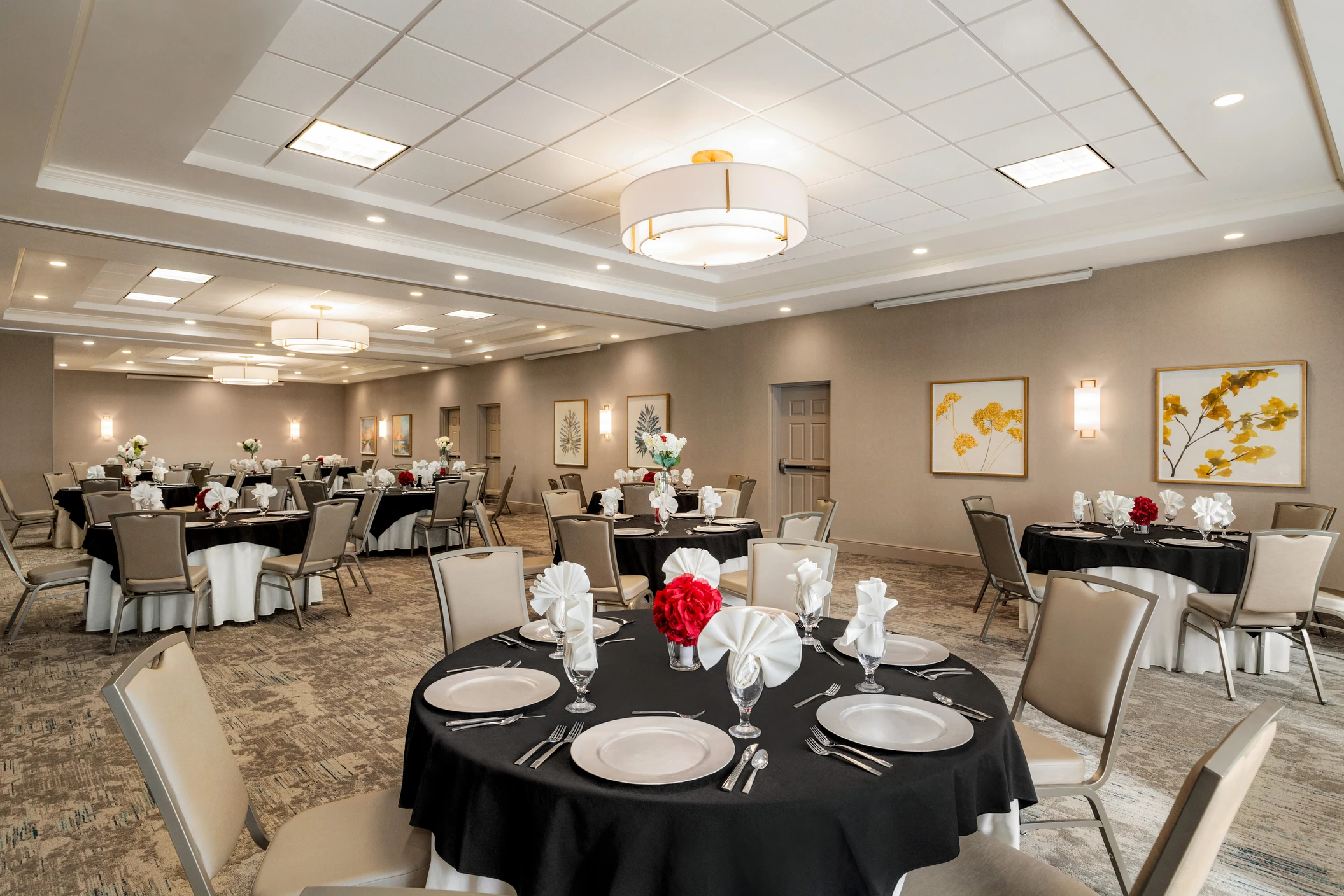
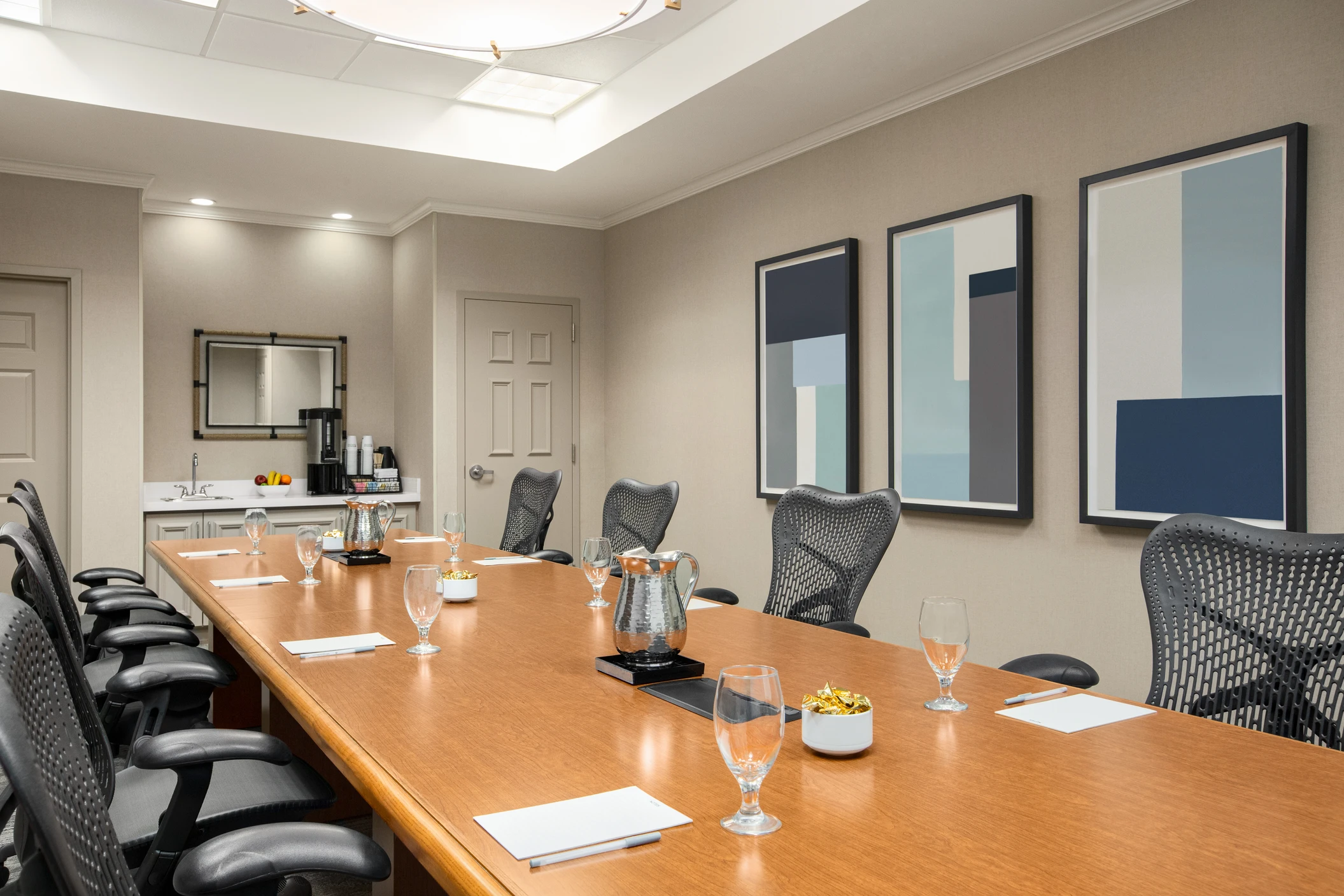
25. Minimalist and Scandinavian-Inspired Interiors
Trend Overview:
Scandinavian design principles of simplicity, functionality, and minimalism are becoming increasingly popular in hotel interiors. Clean lines, neutral tones, and natural materials like wood, stone, and linen are being used to create serene, clutter-free spaces. This design philosophy promotes relaxation and an effortless aesthetic that appeals to modern travelers.
Tips for Implementation:
- Focus on neutral, calming color palettes with natural textures.
- Use multifunctional furniture to maximize space efficiency.
- Emphasize sustainability by using eco-friendly materials.
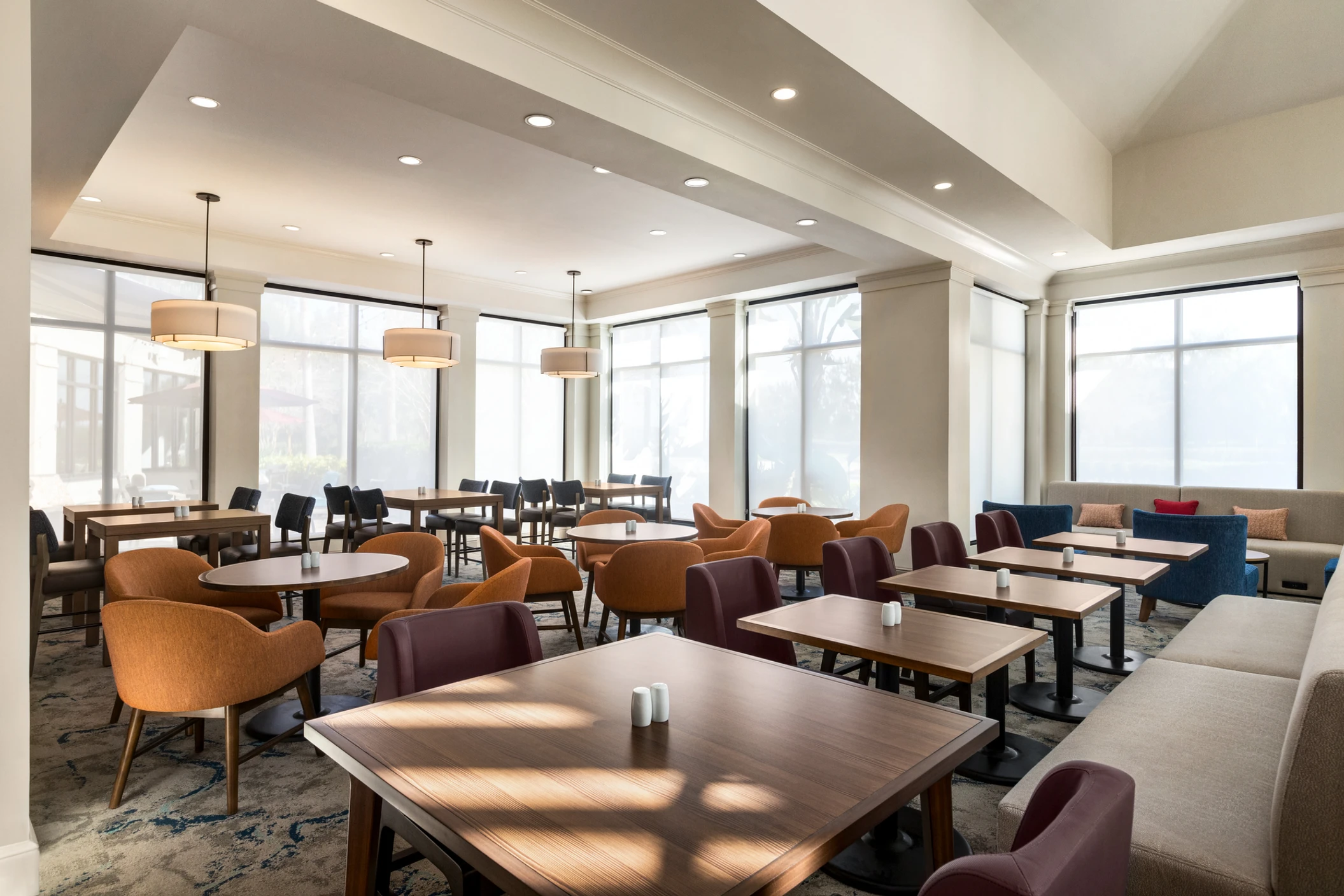
Conclusion
These 25 trends capture the dynamic evolution of hotel design and operations for 2025, offering exciting opportunities for hoteliers to meet guest demands while enhancing functionality and sustainability. By adopting a mix of these trends—whether it’s modular layouts, cultural design, or eco-positive initiatives—hotels can create memorable and meaningful experiences for modern travelers.


